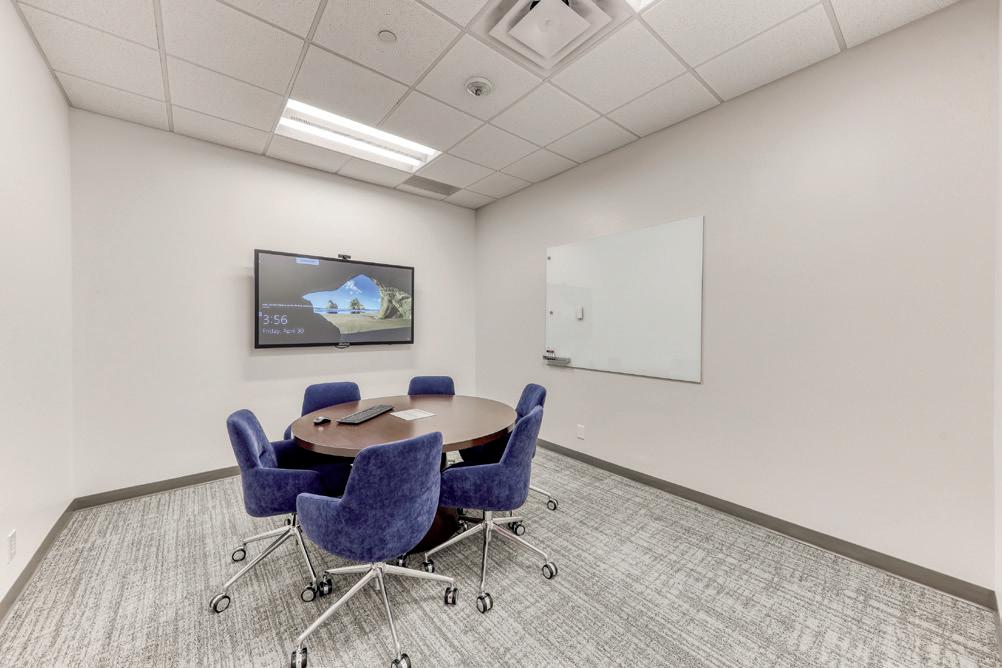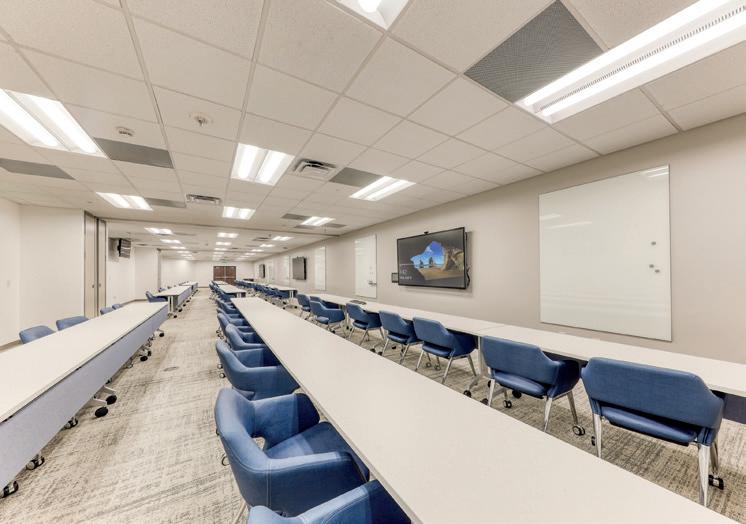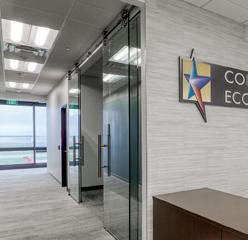focusing on workforce and economic development























Since its establishment as Tarrant County Junior College in 1965, TCC has transformed time and again to anticipate the needs of our community—adding programs that align with evolving workforce trends and address population growth, and incorporating technology that makes us more productive and efficient. That technology takes another step as we integrate artificial intelligence (AI) into our operations and offerings. Of all the changes we have experienced, AI promises to have the most far-reaching impact.
TCC recognizes the complexities of AI and has formed an internal task force to develop a strategic framework that ensures it is used ethically and in ways that further the College’s mission. This work coincides with the state’s agenda, outlined in HB 2060, to promote responsible utilization of AI in public sectors.
While there is much to consider in adopting these tools—cost projections; effect on teaching, learning and administrative functions; data protection—AI is an exciting development in education. Departments have already begun exploring the possibilities.
• Streamlined course management: Generative AI could help our faculty create syllabi and other course materials as well as educational content.
• Virtual teaching assistants: AI-based forums that answer common questions from students would enable human teaching assistants and professors to focus on more engaging instructional activities.
• Note-taking features: For lectures or meetings, the technology can summarize information, organize notes and even suggest follow-up questions.
• Improved accessibility and inclusivity: AI offers voice to text, text to speech and language translation that can make our services more accessible to students with disabilities or those who prefer learning in a language other than English.
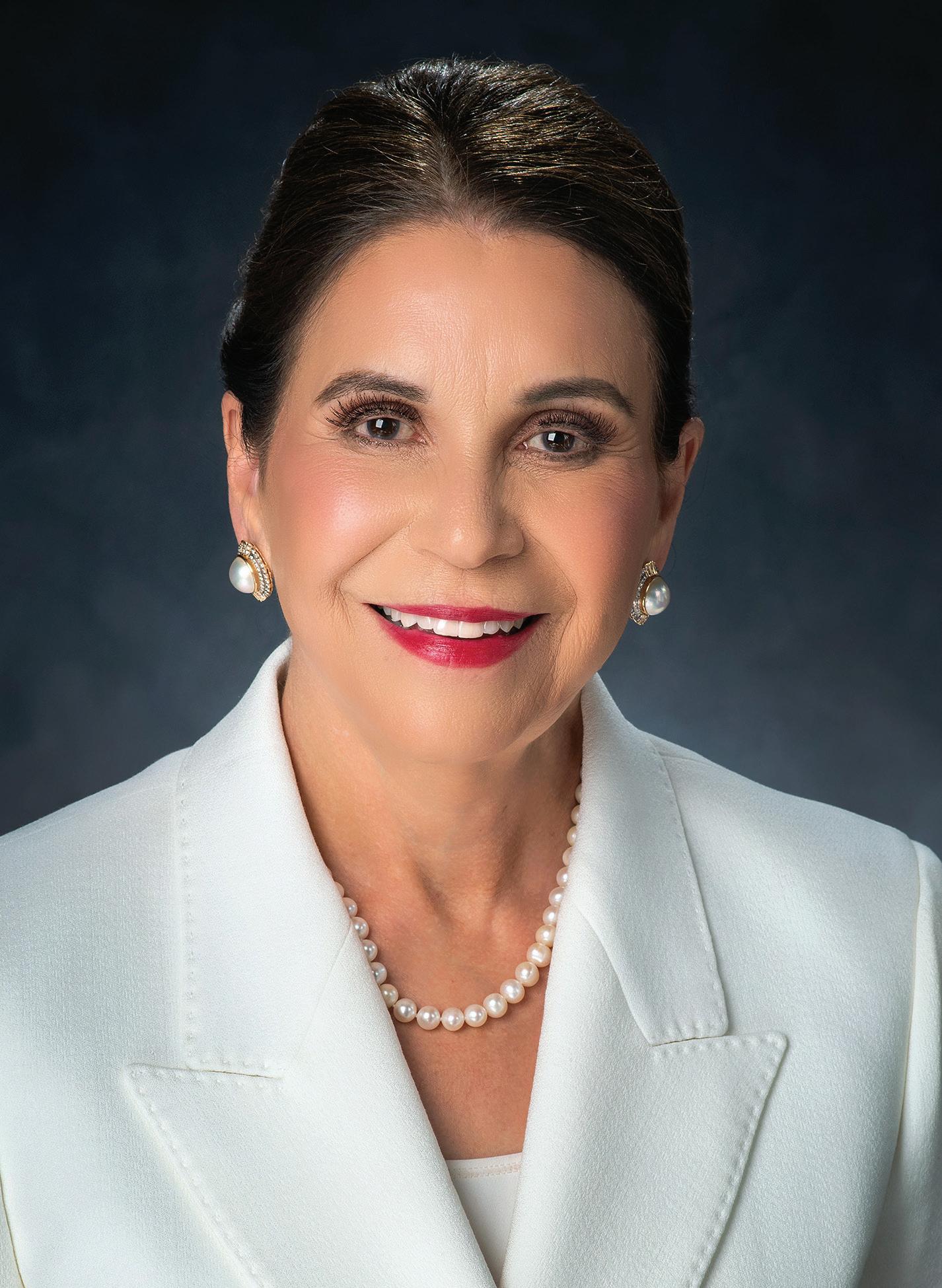
• Customized student support: We could integrate AI with our data systems to provide personalized academic recommendations and financial aid advice.
• Grant identification: AI can continuously scan databases for grant opportunities and find optimal matches, then help draft proposals.
• Increased security: AI-powered video analytics can monitor campuses in real time, detect suspicious behavior and alert security. We also can use AI to examine network traffic for data breaches, malware spread and cyber threats.
In all of these applications, AI has the potential to strengthen our faculty, staff and students. It will augment, rather than take the place of, their ingenuity and interactions.
This issue of The Lens provides a deeper understanding of AI’s possibilities and our state-of-the-art approach to e-learning. These technologies reflect our commitment to innovation and to preparing students for the 21st century workforce, where AI will be increasingly essential. Your collaboration is invaluable. Let us work together and harness this powerful tool to benefit all of Tarrant County.
 Concha
Concha
These days, technology and the classroom are smartly aligned. by jennifer blalock, edd
Training and awareness remain the top deterrents to cyber crimes. by tom delamater
Tracing the history of tech in the workplace shows us how to capitalize on AI. by tyler hicks


Technology has made a quantum leap in the last 30 years. The newfangled equipment that emerged in the early 21st century was the stuff of ’80s sci-fi movies. These days, with the advent of AI, the future of machine learning and technological achievements in and out of the classroom has yet to be charted. The cover illustrates the evolution of technology, as well as the causal interconnectedness of it all over time.
cover illustration by shelly turner
“The measure of intelligence is the ability to change.”
—Albert Einstein
In the late 1990s, I worked for a banking center. I vividly remember the automated teller machine (ATM) campaign. ATMs had been around since 1967 and became mainstream in the ’80s but still were not widely used. Picture it: Bank employees are in the lobby approaching customers in line, offering to show them how they can make the same transaction quickly at the ATM located in the vestibule. Customers had mixed emotions; the vast majority were offended by the notion of choosing a machine over a human teller. They did not trust it and wanted nothing to do with it. One customer warned, “These machines are going to take your jobs!”
Present day, I go to the bank five times a year, maybe. The last time I visited one, there was just one teller, a few iPads and two ATMs. Did the machines, in fact, take away jobs? While it may appear that way, in most instances, ATMs transformed the tasks performed by bank employees and created new job opportunities in other areas.
That’s what technology does. As it evolves, the way we operate evolves right along with it. Yes, technology does take away, but it takes away inefficiencies and inconveniences. Then it adds value, allowing us to do more with less.
Much like the angry customer who assured us that machines would take our jobs over 20 years ago, today, reactionaries are ready to revolt against Artificial Intelligence (AI) for the same fear. But rest assured, robots are not going to take over.
We know that change is necessary, yet we often resist it. There are too many unknown factors: There is too much to learn and relearn; and there are too many variables of what can go wrong. Our comfort zones are far more predictable, and in many cases, nicely decorated, making us feel right at home. But are those comfort zones costing us time, money and convenience?
The evolution of technology is all around us.
According to Statista, in 1997 there were 10 million email accounts. In 2022 there were 4.26 billion. That means everyone you know has at least two email addresses (though most of us have five). Think about it: on your job, how would your day go if you had to accept a call in lieu of receiving an email? For some of us, that could be over one hundred calls a day.
This generation has no idea what it is like to wait for or lose a report card; they simply log into their online portal and confirm their scholastic achievements. Likewise, our workforce does not have to wait until their degree is completed to validate their competencies, thanks to micro credentialing and digital badging. Here in Tarrant County, we have historically been known for vast stretches of farmland. Crops and livestock were the catalyst

for economic growth. Today, there is a new farm in town, but instead of wheat and cattle, you’ll find servers and networking equipment. But just like the economic impact of traditional farms, “data [center] farms also inject millions of dollars into community schools and nonprofits” (p. 17), creating multifaceted economic benefits.
Cooking with my family is one of my favorite pastimes. My oldest son is a pretty impressive chef, and my oldest daughter is a budding baker. While the teenagers are creating edible masterpieces, the younger two are taste testing and being the best helpers they can be.
My husband preheats the oven from his phone, and the refrigerator is playing music, keeping a timer and recording items we need to add to the grocery list.
Yes, our kitchen appliances have more use than my grandmother’s kitchen’s wildest dreams. Evolution is happening all around us, at a pace that is faster than any other time in history. New ways of doing things and resources to get things done are ever-changing. One thing that remains the same is the inherent need for human connection. The fridge can place a grocery order, but it can’t add the secret ingredient. Much like AI can streamline business processes, but it cannot build rapport with your customer.
The Evolution of Technology is not a horror movie title; it is the byproduct of the strength of our intelligence and the promise of an innovative future.
 Jacquetta Dantzler editor in chief, the lens
Jacquetta Dantzler editor in chief, the lens
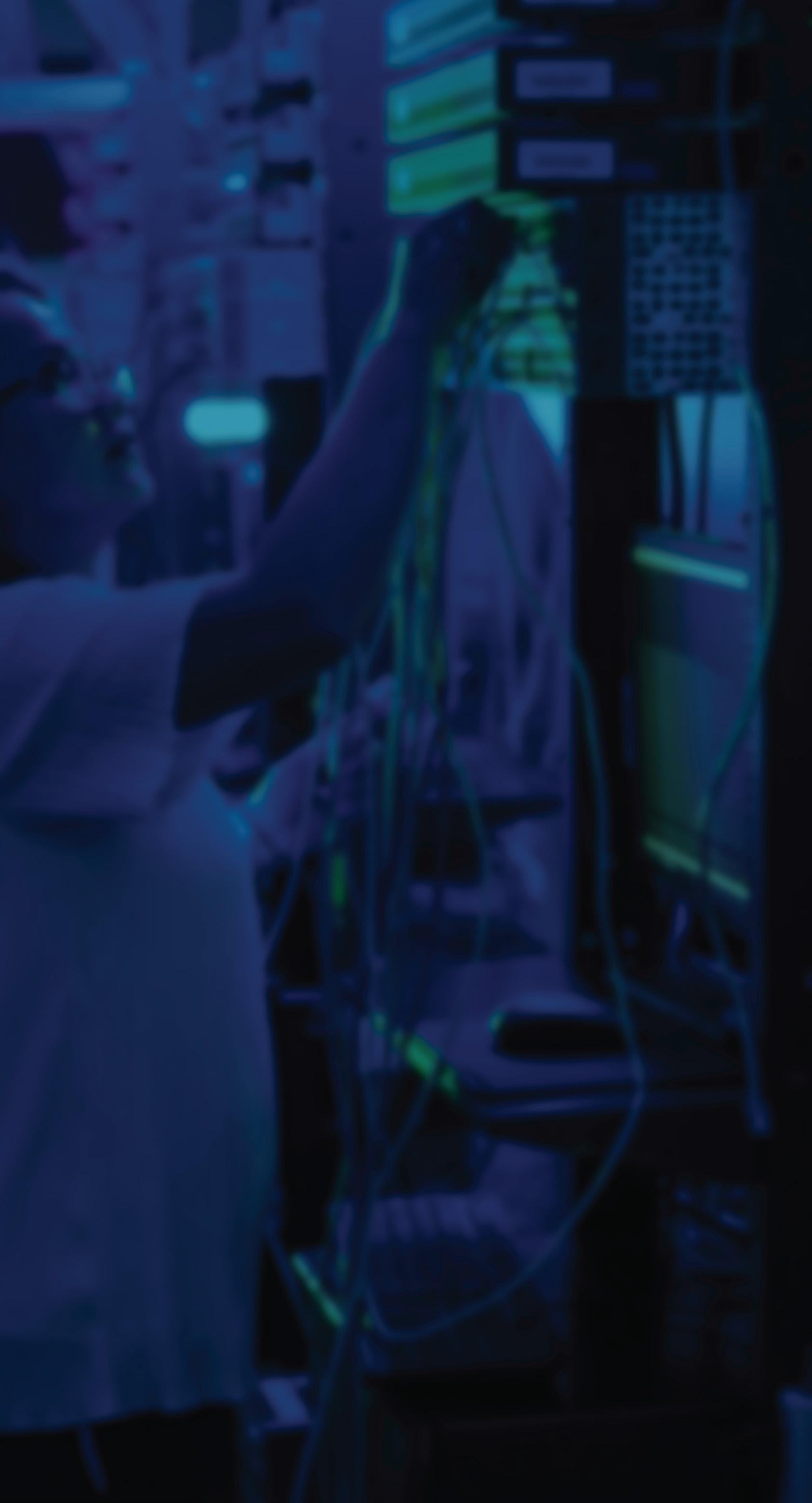
EDITOR-IN-CHIEF
Jacquetta Dantzler
Interim Executive Vice President
Drew Jackson
Subject
Princess Jackson Program Administrator

Elva LeBlanc,
Teresa Ayala, President Kenneth
Laura Forkner Pritchett Gwendolyn Morrison
EDITORIAL
GROUP
Ferrante

jennifer blalock, edd
Jennifer has spent over two decades leading teams in postsecondary education and municipal government. As the CEO of InJenuity Solutions, Jennifer develops, facilitates and evaluates workforce, economic and organizational development programs.

rick gosselin
A longtime sports reporter and columnist for The Dallas Morning News, Rick has covered the NFL for 50 years. He was enshrined in the writers’ wing of the Pro Football Hall of Fame in Canton, Ohio, in 2004. He is the featured columnist for The Lens

samantha ozeale tucker
Samantha is planning on graduating from Tulane University with degrees in cell and molecular biology and studio art. Her illustrations have been published in The Lens magazine five times. Presently, she is working on a wall mural for a pediatric therapy facility.

heide brandes
Based in Oklahoma City, Heide is an award-winning journalist whose work has appeared in Forbes, The Wall Street Journal, The New York Times and The Washington Post, among others. She is also a historic reenactor and an avid hiker.

tyler hicks
Tyler is a writer and journalist from Austin, Texas. His work has appeared in The New York Times, Al Jazeera, Texas Monthly and many other newspapers, magazines and websites across the country.

vanessa orr
Based in Pittsburgh, Pennsylvania, Vanessa has been a freelance writer and editor for more than 25 years. Her work has appeared in hundreds of regional and national publications including the Pittsburgh Post-Gazette and Alaska Business Monthly.

tom delamater
Tom is an Ohio-based writer and editor, and longtime communications consultant to corporations, nonprofit organizations and educational institutions. He is the former chief communications officer at Collin College.

drew jackson Drew, a 20-year resident of Fort Worth, is a distinguished leadership expert and executive coach. Working with dynamic leadership brands, Drew blends a passion for results with a value for relationships, catalyzing business success.

adam pitluk, phd
Adam is an award-winning journalist and the author of Standing Eight and Damned to Eternity. He was a reporter for Time and People magazines, and is the former editor-inchief of American Way. He is the publisher of The Lens

ian fitzpatrick, esq
An award-winning journalist, Ian has written and spoken about workplace diversity and travel topics around the world. Based in Silver Spring, Maryland, he practices law in Maryland and Washington, D.C.

james ndone, phd
James is an organizational and leadership communications scholar who specializes in crisis communication. Originally from Kenya, he has worked domestically and abroad in both education and industry. He has a PhD from the University of Missouri School of Journalism.

sally verrando
Sally is an award-winning journalist in DFW. She has been published by The Dallas Morning News, KERA and other Texas media outlets. A seventhgeneration Texan, she loves travel, animals and bluebonnets.
Advertising in The Lens magazine doesn’t just align your organization with high-quality content in an award-winning publication. Being part of both the print and digital editions of The Lens also puts your business in front of thousands of readers, including Tarrant County executives, entrepreneurs and economic development professionals. Secure your spot today to reach the decision-makers you want as clients.





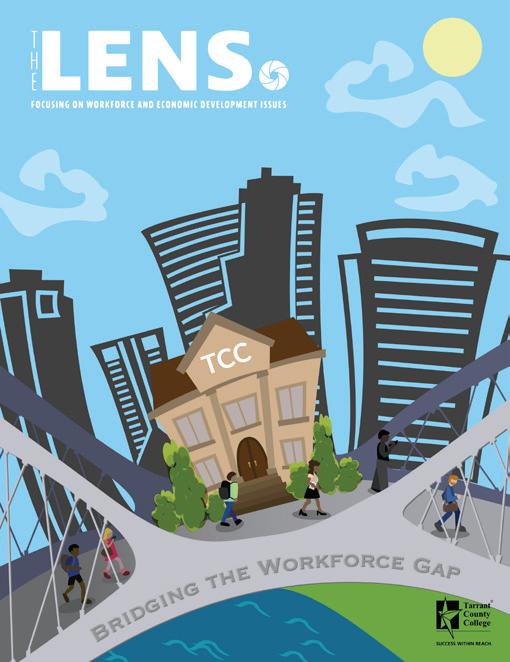


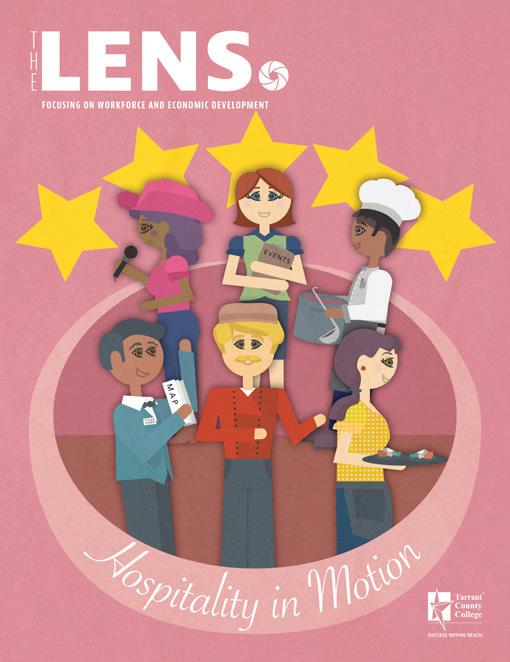
for advertising opportunities, please email our publisher at info@midwestluxurypublishing.com we look forward to working with you!
Students and instructors are wrestling with the explosion of AI technology in and out of the classroom. by vanessa orr
You can’t have a business discussion these days without the term “AI” making its way into the conversation. Artificial Intelligence is a broad term that encompasses the use of smart machines that simulate human intelligence, can learn from experiences and are able to adjust to new information. With applications in fields from healthcare to finance to transportation to education, the use of AI is only expected to grow.
While there is a lot of excitement about this technology, it raises almost as many questions as it answers. How and when should AI be used? What are the ethical standards for its use? How do those new to the technology learn to use it, and how do users stay current as it evolves?
In the education realm, these questions are especially important, as the current generation of students will be the first to grow up using AI and having it assimilated into their everyday lives. Not only will they be using it to help complete classwork, but their teachers will be able to incorporate it into designing the lessons they learn. And no matter what field of work they plan to enter, there’s a good chance that AI will play some part in that world as well.
“Think about how the internet changed education: The impact of AI will be very similar,” explains Arturo Ozuna, EdD, eLearning instructional designer at Tarrant County College Connect Campus. “It will change not only how we do things, but how we think about things. And as these tools build in sophistication, gaining memory, for example, they will grow as we grow to become an even more integral part of everything we do.”
As the use of AI continues to expand, it will fall on educators to take the lead in not only helping their students learn how to use it, but in determining when and where its use is appropriate. Ozuna, for example, is an early adopter of the technology and allows his students
to utilize it if they cite that they’ve used it and share their prompts so that others can learn from it.
“I tell them that they can use it however they need, so long as they’re using it in a way that is ethical in nature,” he says.
He has also been using it extensively in his role as an instructional designer, creating AI-assisted, human-driven models. For students who are interested in leveraging AI in his entrepreneurial courses, he is working on prompting guides that can help them in the development of a business plan or in creating a marketing campaign on social media platforms.
“These are things that students would find valuable and would potentially give them a competitive advantage in creating content or marketing to help them become more active in reaching potential clients and growing their businesses,” he explains. Ozuna is also experimenting with the use of chatbots in order to help students get answers to questions in real time.
On the educator side, AI can and is being used to help generate test questions and to create new scenarios for problem-based learning, with the advantage that it can perform these tasks much more quickly than educators can. It is important to note, however, that this technology needs to be managed carefully.
“The challenge of using this in the classroom is that instructors can become completely reliant on AI. The more we use it, the more we see the comfort of using it.”
— Bhavani Kola DEPARTMENT CHAIR OF COMPUTER

“The challenge of using this in the classroom is that instructors can become completely reliant on AI. The more we use it, the more we see the comfort of using it,” says Bhavani Kola, the department chair of computer science /information technology and a mathematics instructor at TCC Connect Campus.
“When using AI, it’s important to keep very close to what your course has to deliver,” Kola says. “It’s not about just putting information out there, but making sure that students are learning what they need to learn. When you get used to how easily things come up when using generative AI or data analytic tools, there’s a risk that instructors might forget the basic reasons for using it and shift away from pedagogy.
“It’s important for instructors to think about ethical use in the work that they’re doing and then model that for students,” she adds. “Part of our focus as educators is to prepare students for critical AI literacy, understanding what technology does well and what it does not, and preparing them to use this tool in the workforce in useful and valuable ways, and not in ways that are detrimental and inappropriate.”
Depending on the career that a student is pursuing, it’s important that they understand just how this technology might be used in the workplace. In some fields, like marketing and law, AI has
already been embraced; other fields may be slower to adopt and adapt, though that time is sure to come.
“Some disciplines are moving much more quickly than others, but eventually, everyone is going to move in that direction in some way, shape or form,” Ozuna says.
Being able to show students what is coming next and what the workforce is demanding is key, as is having collaborations with the workforce. While some jobs may require machine learning or Python coding skills, students in administrative positions may be looking at the legalities, ethics or limitations of AI.
With the field evolving so quickly, how do students and educators keep up?
“It’s all about having a growth mindset and being open to changes,” Kola says. “Technology is not static; this is a dynamic time, and students are living in an era that requires them to constantly look for what’s out there. They have to be ready to continually upskill and reskill, and work on soft skills like interpersonal relationships—whatever it takes to become leaders.
“I’m prepping future leaders to go into the workforce and be ready to take any changes that come their way,” she adds. “We have to keep in mind that we are preparing students for a world that—right now—doesn’t exist. The workforce is changing so fast, we have to adapt ourselves to it.”



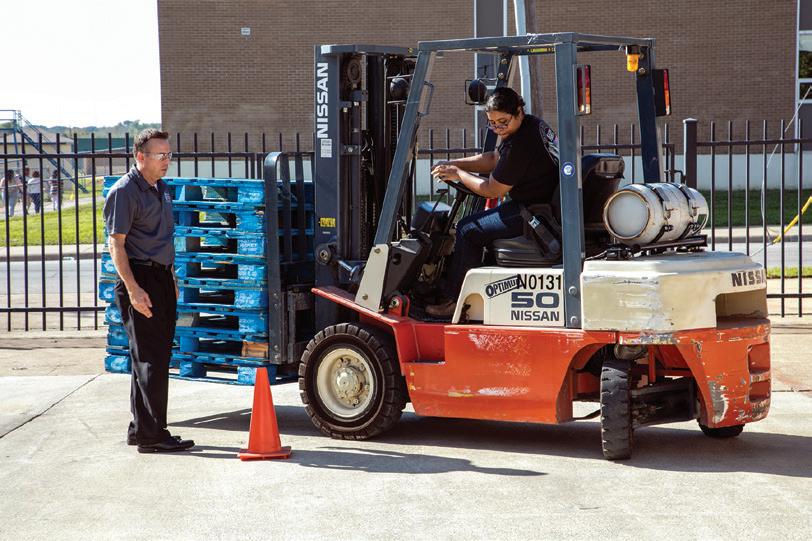




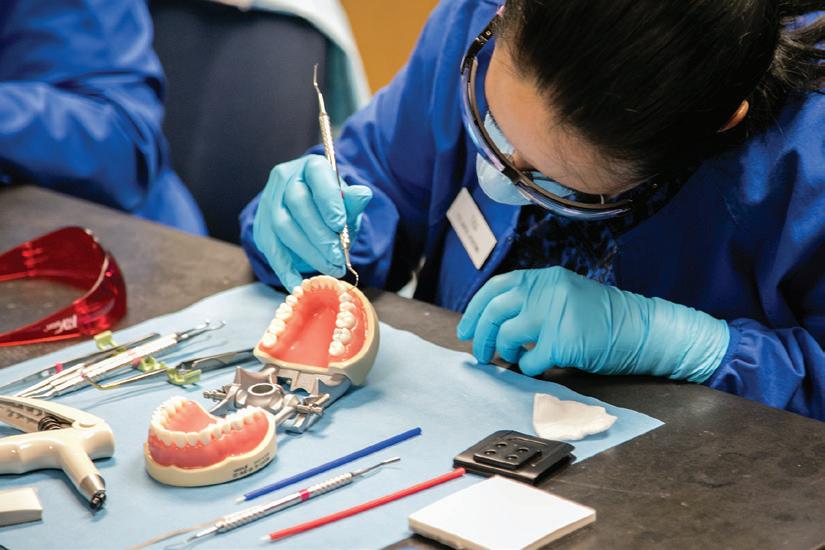



Micro-credentialing and achievement badges are gaining traction as tools for career growth. by heide brandes
As the Expert Moving Consultant at Three Movers in Wallis, Texas, Chris Townsend has witnessed firsthand the profound impact that micro-credentialing has had on employee development and the broader business strategy. While the core business revolves around moving services, the rapid evolution of the workforce and the constant need for upskilling have made micro-credentials an integral part of the company’s talent management approach.
“Micro-credentials offer a flexible, focused and practical way to recognize and certify specific skills and competencies,” he says. “They empower employees to take charge of their learning journey, allowing personal and professional growth that aligns with our business objectives. The digital nature of these credentials makes them easily shareable and verifiable, enhancing an individual’s professional digital record.”
In the past few years, micro-credentials have grown in popularity across academic and corporate worlds. But what are microcredentials, and can they really change your career?
Kim Estes, senior instructional designer at the fully-online Connect Campus at Tarrant County College, is often asked what micro-credentialing is all about. She has found an easy way to bring the idea home.
“Earning badges for achievement or knowledge has been around for decades,” she says. “Think about the Boy Scouts and the Girl Scouts. You earned badges that showed that you mastered a certain skill set, like how to start a campfire or archery. It’s like that, except for business and academics.”
These days, more and more companies, industries and academic institutions are using digitally-based micro-credentials as a way of signifying that an employee or a candidate has mastery of a certain skill or has reached a significant milestone in their career or educational journey.
“Micro-credentialing is your abilities made visible, and they’re shareable. We mostly talk about these badges that you get within a conference or from a professional development training, but they can be displayed on portfolios and email signatures that can
be internally linked,” Estes says. “Suddenly, all of these skill sets and experiences are readily available for clients or employers.”
The badges become what Estes calls “a micro digital record” that tracks learning and advancement throughout a person’s professional career. “You can share it publicly so that, if you are looking for a job, you can pull all of your digital credentials into a little portfolio that would best represent your ability,” Estes says.
Micro-credentials come in many formats, from short courses that certify knowledge in a particular area to years of service with a company to attendance at a professional conference. Micro-credentials show an ongoing commitment to education that can make candidates more competitive in the workforce and more appreciated in the workplace.
For Townsend and Three Movers, the trend toward microcredentialing reflects a broader shift in the employment landscape, where continuous learning and adaptability are paramount. He says micro-credentials offer a way to upskill and reskill employees quickly.
“To fully leverage micro-credentials, we encourage our employees to pursue badges that align with their career aspirations and fill critical skill gaps within our operations,” he says. “This dual focus ensures that our workforce remains at the cutting edge while fostering a lifelong learning culture.”
Moreover, Three Movers uses these credentials as part of its recruitment and retention strategies, attracting individuals who are proactive about their professional development, and to recognize the achievements of current team members.
“One notable success story within our company involves an employee who pursued a series of micro-credentials in logistics and customer service excellence,” Townsend says. “These credentials bolstered their expertise and opened up new career advancement opportunities, leading to a well-deserved promotion. This example underscores the tangible impact of micro-credentials on career growth.”

“Micro-credentials offer a flexible, focused and practical way to recognize and certify specific skills and competencies.”
— Chris Townsend EXPERT MOVING CONSULTANT, THREE MOVERS
Micro-credentialing is big business, too. In February, Instructure Holdings, Inc., an educational technology provider of a learning management system and a digital badging platform, acquired Parchment, the world’s largest credential management platform and network. Parchment has over 13,000 customers and has exchanged more than 165 million credentials over two decades.
Major companies are also investing in making the practice a part of their employee growth strategy. Retail giant Walmart, technology pioneer IBM and online stalwarts Google and Amazon Web Services have embraced badges both internally and externally, making micro-credentialing more mainstream.
“Google and AWS both award badges for the training that they do externally. So if you become an AWS Cloud Architect, they have a certification for that,” says Elizabeth Miller, digital credentialing expert for Instructure. “There’s tons of badging going on, but I think the place where there’s a gap is the end-to-end workflow. How those badges are being used is the question.”
A recent report from Northeastern and 1EdTech, sponsored by Walmart, found that most talent acquisition systems aren’t prepared to take in non-degree credentials. On the other hand, higher education providers like Tarrant County College are leading the way in developing micro-credentials, and larger employers are scaling the technology and processes to the point that it’s easier for everyone.
“We have to put a quality standard across platforms and across businesses and academic worlds, so that the standards can work globally,” Estes says. Estes also says that credentials demonstrate marketable skills and also how companies advocate and educate so that they can spread the acceptance out to academics and industries who aren’t on board yet.
ACADEMIA AGREES
Joshua Tarbay, EdD, director of Weekend College & Accelerated Programs and interim dean of STEM for TCC Connect Campus, says the district recently embarked on its journey into micro-
credentialing and digital badging. Dr. Carlos Morales, founding president of TCC Connect Campus, spearheaded the formation of a micro-credentialing task force in the summer of 2023.
“The task force’s objective was to research and explore best practices from other institutions regarding micro-credentials, aiming to integrate them into TCC’s educational framework,” he says. “While our micro-credentials are currently undergoing the final approval process, we are eagerly anticipating their potential. We remain optimistic and enthusiastic about the future prospects of our micro-credentialing initiative here at TCC.”
Tarrant County College already has a district-wide badging program in place, but the process has been ongoing and strategic. Estes points to one of her first forays into badging, which was a test case for the online instructor program for the Connect Campus. Candidates wanting to teach online at TCC, whether through Connect Campus or with hybrid classes, must take a best practices course for online teaching. When completed, the candidate receives a certificate that must be renewed every two years.
Because the college wants instructors to stay up to date on the compliance issues, TCC offers a credential for that.
“We have over 500 people who, when we’re ready to go live, will instantly receive the credential they have already earned,” Estes says. “All of their credentials will be in one master credential so they can show that they earned and demonstrated mastery.”
Bridging the gap between academia and industry is essential to making micro-credentialing more standard and acceptable to hiring managers and the corporate world.
“In order to accomplish this, we must foster partnerships and collaborations with industry stakeholders to ensure that our micro-credentials align with specific industry needs and standards,” Tarbay says. “By involving local industry professionals in the development process, we here at TCC can create microcredentials that are directly relevant to the skills and competencies sought after by employers.”






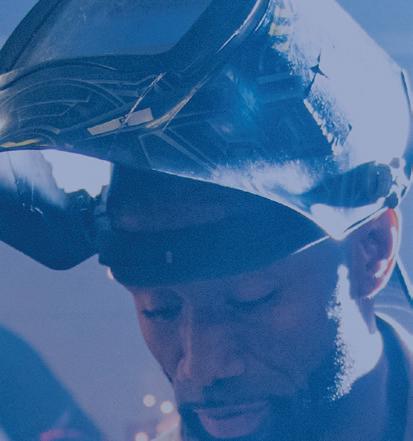
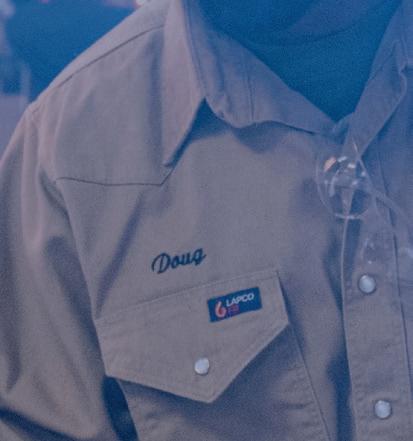






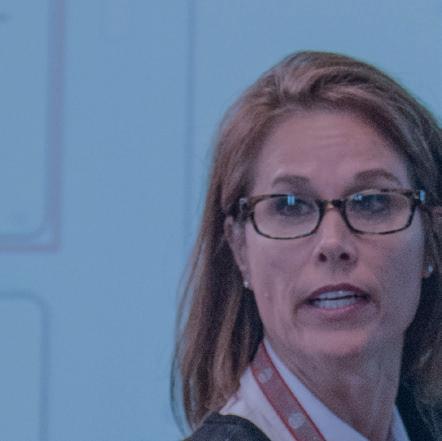
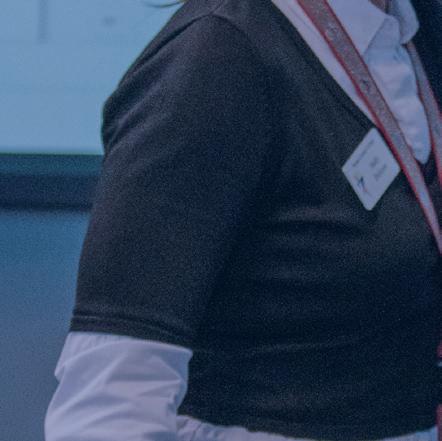




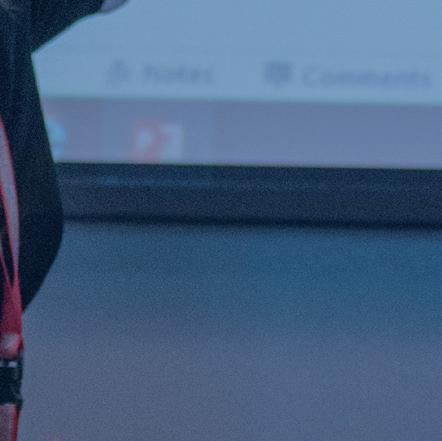




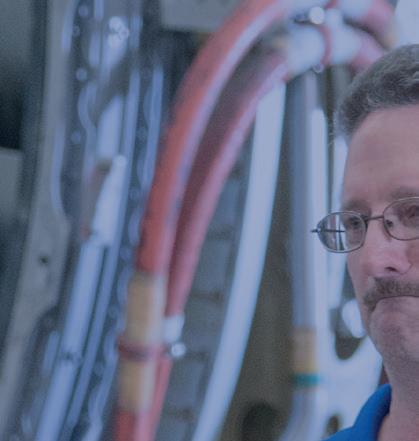






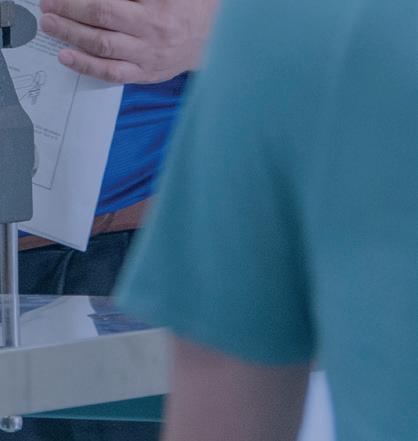


The Meta Fort Worth Data Center is just one of several warehouses dotting the Tarrant County countryside. by sally verrando
Horses, donkeys and cattle graze in emerald pastures under an azure sky. Chickens peck the ground in staccato rhythms. The view from residents’ front porches in this bucolic setting is a white, flat-roofed edifice rising above the treetops just 2,000 feet away—the 2.5-million-square-foot Meta Fort Worth Data Center in north Tarrant County.
North Texas is ranked number eight in global development during this age of digital transformation, according to a 2023 report from Cushman & Wakefield, a commercial real estate broker. Its market research covers established areas like number one-ranked Northern Virginia-Washington, D.C., and regions on every continent except Antarctica.
The pandemic accelerated cloud growth, which stimulated data center demand, says Anne Rosenau, managing director of Cushman & Wakefield’s data center advisory team in the Americas. Cloud and media companies, artificial intelligence (AI) and machine learning continue fueling growth.
“A data center is a mission-critical real estate facility that houses servers,” says Bo Bond, Cushman & Wakefield executive managing director in Dallas. The highly secured buildings and campuses power and cool servers that compute for their intended purposes.
It’s what makes online bill paying possible. Processing insurance claims. Sending emails. Downloading tunes. Watching cute cat
videos. Data centers are the engines that make our world go.
Meta’s Fort Worth Data Center began operations in 2017 at AllianceTexas, Ross Perot Jr.’s master-planned development. The multibillion dollar, 150-acre Meta campus is one of five data centers there so far, says Reid Goetz, senior vice president of Hillwood Properties. He leads the industrial development team for AllianceTexas. Goetz expects major announcements this year for more data center activity in Tarrant County.
“We’ve become a marketplace that is very much in high demand,” he says. “Dallas/Fort Worth is the second-largest data center market in the entire country.”
Factors for prime data center development are accessible, low-cost power; fiber connectivity; water; taxes and land prices, according to Goetz.
“You can’t just go put a data center anywhere,” he says. “Infrastructure is key.”
Data centers are valued in kilowatts or megawatts of power. A megawatt is 1 million watts and can fuel about 200 homes, according to the Electric Reliability Council of Texas’ (ERCOT) website.
ERCOT manages 90% of the state’s electric power for 26 million customers. Population and economic growth continue to challenge the state’s power grid, says Trudi Webster, ERCOT spokesperson.

But digitization has its own demands.
ERCOT approved at least 22 projects since January 2022, requesting more than 2,700 megawatts or about five times the city of Lubbock’s power needs, according to a 2023 ERCOT report on “Large Loads,” operations that apply for at least 75 megawatts. The report also said 55 additional projects requesting 17,000 megawatts want to power up by Dec. 31, 2024.
Crypto mining, not data centers, is the largest of the Large Loads tapping into the state’s power grid, Webster says. In response, Bond believes the data center developers and hyperscalers have unfairly been lumped into that projected demand.
Hyperscalers are the giant media companies like Meta, Google and Apple. Third party, multitenant, colocation data centers lease space to smaller companies and their servers, like the QTS Fort Worth/Dallas 54-acre campus at Alliance. QTS announced that it will expand operations to an additional 471,000 square feet. It’s expected to be completed in 2026.
Andrew Fray, head of the Cushman & Wakefield advisory team in Europe, the Middle East and Africa, said in a 2023 webinar that every market needs data centers. Hyperscale requirements are moving to megascale levels, pressuring power providers. A common perception, he said, is “data centers, by housing data, are taking power away from housing people.” Companies are addressing this challenge.
To alleviate electricity shortages, ERCOT proposed changes in its communication, approval and regulatory processes for all Large Load users. ERCOT also is interconnecting with grids outside of Texas.
“ERCOT continues a reliability-first approach to grid operations and will continue to operate the grid conservatively,” Webster says, “bringing generating resources online early to mitigate sudden changes in generation or demand.”
According to Meta’s webpage, all of its facilities around the world “are supported by 100% renewable energy and have reached net zero emissions.”
Data centers also consume millions of gallons of water. Servers generate immense heat and require complicated cooling systems. Meta’s goal is to be water positive by 2030, according to its webpage, meaning it will restore more water than it uses.
Instead of using water continuously, the QTS Data Center pulls cold winter air into its system for free cooling, according to its website.
Rural areas are preferable for constructing hyperscalers’ data centers because of the need for large tracts of land. Land value is based on accessible transmission and distribution lines and substation switching, says Bond. “The value of the land is the ability to access power.”
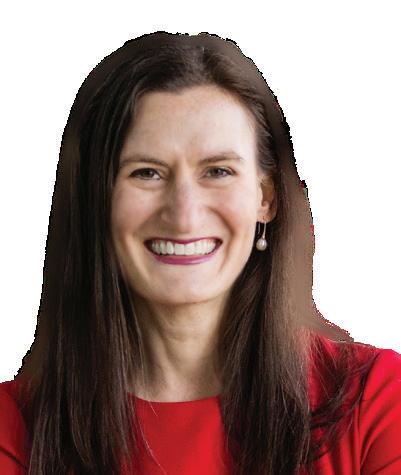

Jodi Daniels, founder and CEO of Red Clover Advisors and co-author of Data Reimagined: Building Trust One Byte at a Time, is a data privacy consultant. She helps businesses develop strategies to run effective compliance programs and build trust with customers.
For users wanting to protect personal information, Daniels says, read each company’s privacy notice— an unfortunately tedious process. But the more you review, the easier it gets.
“Focus on the collection, use and sharing sections,” she says. “Bigger companies are beginning to make the notices clearer with summaries.”
Municipalities and counties often recruit developers and hyperscalers to build data centers in their areas. “It’s significant and can create a lot of tax revenue for a community, especially if it’s going into a rural area,” Bond says. “It’s a game changer.”
He and Goetz agree that data centers don’t generally increase traffic or school enrollments. “They pay for their electricity,” Goetz says. “They pay for their water. It’s really the highest kind of net margin tax revenue.”
Important to the residents in the area, these building projects create jobs. More than 1,200 skilled construction, mechanical and electrical workers were on the Fort Worth site during peak construction, and over 200 employees currently keep the center operational.
Data centers also inject millions of dollars into community schools and nonprofits. Philanthropic contributions also cannot be ignored, evidenced by Meta co-sponsoring the 2024 Fort Worth Stock Show and Rodeo’s Junior Ag Robotics competition. As humans expand their digital transformation, humanity will increasingly rely on data centers. It’s something easily taken for granted. Digitized information is right there at the touch of a finger or facial scan. Even sitting on the back of a horse.

Tarrant County College plays a pivotal role in keeping the workforce trained up on new technologies. by drew jackson
As artificial intelligence (AI) rapidly transforms industries and reshapes the workforce, Tarrant County College is at the forefront of preparing students and the community for the challenges and opportunities ahead. Through innovative initiatives, strategic partnerships and a commitment to excellence, TCC is positioned as a pivotal force in driving economic growth and ensuring that Tarrant County thrives in the age of AI.
Recognizing AI’s transformative potential, TCC has established an AI task force with a clear mission to facilitate the integration of AI technologies into learning, teaching and operational processes. Guided by principles of innovation, ethical use and academic integrity, the task force aims to create a sustainable AI ecosystem that benefits all stakeholders while maintaining a safe and responsible approach to AI adoption.
TCC’s long-term goal is to be recognized as Texas’s premier AI technology and innovation institution by 2034. This ambitious vision aligns with the projected impact of AI on the global
April 2024 to develop a shared understanding of AI across the college community and ensure all stakeholders can actively inform and participate in the ongoing work to empower ethical AI use. The campaign offers a range of activities, including AI 101 sessions, discussions on AI integration in the workforce, handson exploration of AI tools and workshops on AI for student-led creative expression.
To further support faculty in integrating AI into their teaching practice, TCC is launching the “AI for Educators” course designed by Arturo Ozuna, EdD. This comprehensive, five-week program overviews generative AI and its potential to enhance teaching and learning. Participants explore the benefits and challenges of AI integration, learn how to evaluate AI tools and develop strategies for transparent communication with students. By empowering faculty with the knowledge and skills needed to use AI effectively, TCC ensures its students receive a cuttingedge education that prepares them for the future.
Executives estimate that 40% of their workforce will need to reskill due to implementing AI and automation over the next three years.
workforce. According to a recent study by the IBM Institute for Business Value, developing new skills for their workforce is the most pressing talent issue facing organizations today. Executives estimate that 40% of their workforce will need to reskill due to implementing AI and automation over the next three years. The study also reveals that 87% of executives expect job roles to be augmented, rather than replaced, by generative AI. To prepare students for this evolving landscape, TCC is developing groundbreaking courses that equip learners with AI skills, ensuring they are primed to excel in the future workforce.
The AI Taskforce is actively working on several fronts to achieve these goals. TCC launched a focused AI awareness campaign in
To effectively serve the broader community, TCC has an entire department dedicated to supporting the Tarrant County incumbent workforce through customized training. The Corporate Solutions and Economic Development department (CSED) meets this need in the community by partnering with business leaders in Tarrant County and providing training courses to enhance the competencies of all workers in the county. The CSED department has been monitoring the workforce landscape and studying the monumental changes coming to the workplace through AI. Because of this, CSED will be hosting the “AI for Leaders” conference in fall 2024. This conference will catalyze regional transformation by bringing together AI experts, influential county officials and business leaders to learn, grow, discuss and plan the future of work in Tarrant County.
At Tarrant County College, we are all about learning and growing from others and their experiences. Are you using AI to innovate in your job, enhance your studies or explore new hobbies? I want to hear from you. Email us at corporate.solutions@tccd.edu to share how AI plays a part in your life. Your stories are the key to unlocking our community’s potential, inspiring others and shaping our collective future with AI.
AI is reshaping educational practices. by james ndone, phd
In November 2022, an artificial intelligence (AI) research laboratory (OpenAI) released ChatGPT, a natural language processing chatbot that can perform human-like tasks. To many people, this felt like being hit by an asteroid, as both individuals and companies found themselves thrust into a new era of AI innovation. The subsequent surge of interest among tech giants spurred a flurry of activity, leading to the rapid development of a plethora of AI platforms. This collective momentum marked the beginning of a transformative era in technology, reshaping our understanding and utilization of AI.
AI, defined as the use of machines to execute human-like tasks, has been an integral part of human life for quite some time. From the seamless navigation provided by Google Maps to the convenient voice-activated assistants like Siri and Alexa, and even the helpful bots that assist during online shopping, AIdriven tools have seamlessly integrated into our daily routines, becoming as ubiquitous as the adoption of email.
One of the sectors that has not been spared by the AI evolution is education, with generative AI, which can create new content or data, usually from a simple prompt, being the most prevalent. The rapid sprouting of AI platforms in the middle of an academic year caught many schools unaware, leaving instructors and institutions with a multitude of questions: Should AI be encouraged in the
classroom, or should it be banned altogether? How can AI be used responsibly, and how can it be effectively incorporated into course curricula? These pressing questions lingered (and some still linger), capturing the attention of educators at all levels of learning institutions.
Some institutions opted for a total ban on AI usage in learning, with some thinking that the chatbot would end up being a “cheatbot” for students, making them lazy. However, instructors and learning institutions are slowly acknowledging that AI is here to stay, and the earlier they embrace it, the better.
According to a survey conducted by Forbes in late 2023, 60% of teachers indicated that they had incorporated AI into their classroom practices. This integration spans various applications, including administrative tasks such as grading assessments and managing student data, which are being streamlined through AI algorithms, giving instructors the ability to focus more on personalized instruction and student engagement.
Dr. Wes Fondren, the associate dean of the College of Graduate and Continuing Studies at Coastal Carolina University (and the former director of technology for a major media company), characterizes the current state of AI implementation as akin to the “Wild West.”
“Many faculty have embraced AI, incorporated and integrated it fully in their pedagogy. At the other end, faculty are preventing use, penalizing students and petitioning the administration to ban AI totally.”



“I have talked to many universities that are still grappling with developing policies, deciding which generative AIs to adopt or allow, how to protect data, funding, and how to provide monitoring and guidance,” Fondren says.
Instructors’ acceptance and utilization of AI vary widely. Fondren observes a spectrum of engagement, from full integration into pedagogy to resistance and calls for prohibition. “From the usage data I have seen, faculty are on a wide spectrum,” he says. “Many faculty have embraced AI, incorporated and integrated it fully in their pedagogy. At the other end, faculty are preventing use, penalizing students and petitioning the administration to ban AI totally.”
The discipline-specific application of AI is also evident, with mathematics departments exploring AI for tutoring and problemsolving, while composition instructors teach students to use AI for drafting essays. “Whereas some composition instructors are teaching students how to use AI to draft essays. I have also seen business instructors having students use AI to create business plans that they evaluate as an assignment,” adds Fondren.
AI’s potential in personalized learning initiatives is extensive. Fondren highlights its capacity to cater to diverse learning styles and abilities. “The potential here is extraordinary,” he says. “I sat down with a student who had dyscalculia, which is a math
learning disability. We typed in the math problem and asked AI to explain how to solve it—which it did. Then I typed, ‘Now explain like I have dyscalculia’ and the explanation was much different.
“I am also working with a group of disabled veterans to build reading-assistive AI to help them with reading problems after head trauma. The future of custom tutoring is here.”
A key question remains: Does using AI platforms for ideas or outlines constitute cheating? “As long as students acknowledge AI’s contribution to their work, I do not think so,” Fondren says.
As AI continues to permeate the education sector, it holds the potential to democratize access to quality education, tailor learning experiences to diverse student needs, and equip learners with the skills needed to thrive in the digital age. How instructors navigate and optimize AI’s integration for student benefit remains a critical question. While acknowledging AI’s existence is essential, teaching students how to use it responsibly holds more substantial promise for enhancing learning experiences.
Schools should not view AI as a passing fad, nor should it be viewed as a foe to be subdued. Rather, faculty should view it as a powerful tool for shaping the future of education—one that, if wielded responsibly, has the potential to empower generations of learners to thrive in the digital age and beyond.
These days, technology and the classroom are smartly aligned.
by jennifer blalock, edd

Asonline learning continues to embed itself into nearly every aspect of academic preparation, public and private education, workforce training and lifelong learning, there are certain truths we are all, if not somewhat begrudgingly, coming to terms with regarding this revolutionary platform. First, distance learning has established itself as the defining educational transformation of the last century. There’s nothing that has more deeply modernized not only the way we learn, but also where we learn it. And secondly, despite our best efforts to question it, ignore it, or wait it out, virtual learning is here to stay and only promises to become more prolific.
Certainly, even with the significant growth and expansion of the last decade, distance learning still faces public scrutiny and analysis. Parents and educators still grapple with understandable concerns about the long-term implications of its social and emotional learning limitations. There’s healthy skepticism about its academic rigor, holding the field accountable. Other long-standing questions about its efficacy still exist, making us reasonably cautious.
But the undeniable permanence and global impact of this educational phenomenon compels us to turn the page, and while not abandoning the collective trepidation about the unknowns, begin celebrating its strengths by understanding what’s going right with distance education.
The best way to alleviate the fear is instead to fully leverage the best of virtual learning by examining how distance learning has and will evolve to meet our workforce and training needs.
While Dr. Roy D. Sleator traces the earliest historical instance of remote learning back to a correspondence course on shorthand in 1728, e-learning was introduced in the higher education realm by early adopters as technology became a regular part of daily life, with innovative colleges like Nova Southeastern University, Western Governors University, Drexel University and others converting correspondence courses to computer lessons and developing new content to be offered via the computer in key subjects to better serve students who had time and access constraints. Ron Gordon, former president of Atari, a groundbreaking video gaming system, developed the Electronic University Network in 1985, and the landscape of open access education began to change rapidly as personal computers became a way of life in school, at the office, and at home.
It’s not surprising that early participants in online learning programs were aligned with the community college student profile. Active-duty military, working adults, returning students and single parents were among the first to flock to online college offerings.
Dr. Salimary Mojica Ravelo, who earned all three of her degrees online, fits all of those categories. “As an active-duty member of the United States Army, who was deployed overseas and raising a family, it would have been nearly impossible to manage
completing college courses in person,” Ravelo says. “Online programs put my higher education dreams within reach and allowed me to prepare for my post-military career.” Ravelo now serves as the Contract Compliance Coordinator for the City of Savannah (Georgia) Economic Development Director.
The data supports the assumption online students are balancing the same responsibilities Ravelo did. According to the annual report published by Education Dynamics, Online College Students Report 2023, 80% of all online students identified as having a job, working either part-time or full-time. The report also found that more traditional-aged students are now participating in online programs, providing them with the autonomy and flexibility they want as they complete college.
Community colleges in Florida, California and Texas were early adopters in establishing dedicated virtual campuses to not only manage the online programs, but also offer full-service student support and online faculty and staff with specialized expertise in instructional design, e-learning applications, student assessment and other key components of a successful online program.
Dr. Carlos Morales is the Founding President of TCC Connect, Tarrant County College District’s sixth campus, a full-service and stand-alone campus. As President, he’s tasked with ensuring that the online students receive high quality instruction and all the support services necessary to promote student success, retention and completion.

“Our commitment is to provide our online students with every tool and resource available,” explains Morales, who has been in the distance learning field for nearly three decades and is recognized globally for his innovative approach to e-learning. “The college uses innovative tools, including a pre-enrollment online readiness assessment, to help students identify if their learning styles align with online learning; plagiarism prevention; 24/7 online tutoring platforms; and deep freeze proctoring software that prevents students from accessing other websites while testing to ensure academic integrity.”
The enrollment for the virtual campus continues to grow under Morales’ leadership, a trend occurring nationally as online programs expand. TCC Connect now serves more than 33,000 students. Currently, the college employs nearly 600 faculty members who teach 40 fully online programs and 350 course titles across 1,200 sections. Examples of TCC Connect’s exemplary student support programs for their online learners include a robust calendar of webinars, study sessions and online advising. Morales, who continues to teach online, explains the benefit of having a dedicated campus for virtual learners.
“Our team is comprised of faculty and staff who are given customized training in our online platforms and resources,” he says. “Our students should feel as supported as though they were on campus, in person.”
Student support efforts and initiatives like those at TCC Connect Campus are working. Not only has TCC Connect been recognized with countless awards for its innovation, but its real reward is in the incredibly high student retention rates. As of Fall 2023, the retention rate for students in the virtual campus was an impressive 90%. The virtual college’s student success, measured by earning a grade of C or better in a course, is consistently above the national average. Midori Carpenter, who is in the final year of her undergraduate degree and preparing to begin a Master’s degree online, explains how important it is to have faculty who care and encourage in the online classroom as she nears the finish line of her degree.
“It really makes a difference to have an instructor who challenges you, supports you and recognizes when you may need some individualized engagement,” Carpenter says.
Dante DelPozzo, a senior at the University of North Florida who will graduate in May, benefitted from the flexibility of online courses as he balanced playing lacrosse, participating in a fraternity and taking a full load of classes. “My online instructors gave me the opportunity to meet with them, schedule time and really made me feel like they cared about my success,” he said.
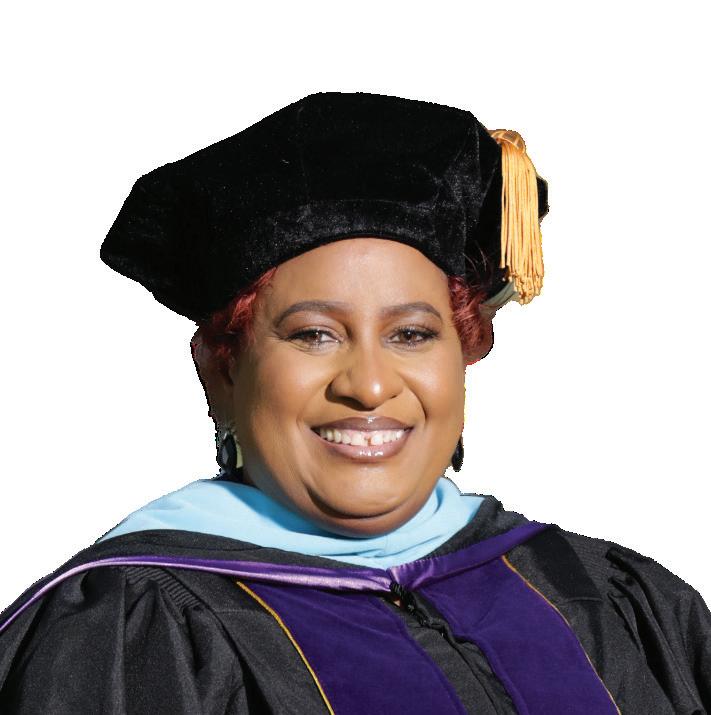
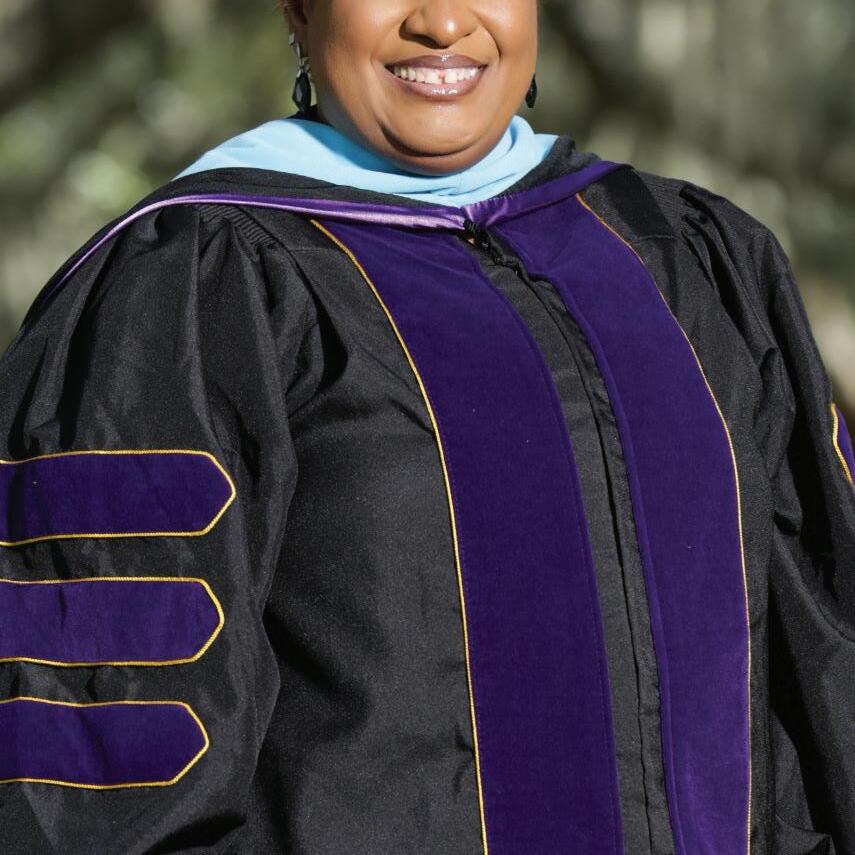
Dr.
“As an active-duty member of the United States Army, who was deployed overseas and raising a family, it would have been nearly impossible to manage completing college courses in person.”
With 52 full-time faculty members, e-faculty coaches and instructional designers, Morales and his team are fully engaged in supporting the 600-plus adjunct or part-time faculty members who teach for the Fort Worth, Texas-based college from all over the nation. “All faculty must complete an online instructor certification, covering important instructional techniques, learning modalities, accessibility methodologies and more,” he explains. And the training isn’t just for new faculty as they onboard. Each faculty member employed at TCC Connect must renew their certification annually to promote the high academic excellence the college demands.
Dr. Alex Herzog, an adjunct professor at Southern New Hampshire University, another globally recognized online learning innovator, commits to personalizing his online classroom. “I always do a short video to introduce myself,” he says. “I offer opportunities during the term to communicate by phone or Zoom. It’s coffee talk where we discuss the class and we share a cup of coffee virtually.”
Herzog and his SNHU peers are also required to complete and pass an online instructor course to ensure they can navigate the learning management system and understand how to abide by the University’s student success-centered online learning principles. SNHU also offers an annual online faculty convening, Gather, with online teaching and learning sessions to aid in professional development and academic community and fellowship.
Instructional design and user experience experts are critical to the online learning environment. From accessibility to ease of navigation, a talented instructional designer can make the virtual classroom come alive.
Kim Anderson, a former business/marketing teacher who taught in-person and online, transitioned into a full-time instructional designer position for a new professional challenge. “Quality instructional design is critical to student outcomes,” Anderson says. “If their learning isn’t relevant, engaging, and aligned with your desired learning objectives, learners won’t be successful in their jobs. It gives structure to the development of a course and creates a pathway where learners with different learning styles can be successful.”
Morales believes the dedicated instructional design team and TCC Connects e-faculty coaching program are major contributors to maintaining the academic excellence of the virtual classroom. The college received the Outstanding e-learning Support for Faculty or Students from the Instructional Technology Council (ITC) in 2023. The award recognizes institutions of higher learning that have an organizational unit that has “built a solid reputation for outstanding support and service for their faculty and students.”
The e-faculty Coaches serve as the primary quality assurance and compliance lens for fully online and hybrid environments. Services provided by the e-faculty Coaches include viewing courses, collecting data and collaborating directly with instructors to identify strengths and areas for improvement based on quality management standards for communication, interaction and support.
According to information from TCC Connect, since 2018, e-faculty Coaches have observed more than 1,000 class sections. Data collected from observed sections shows an increase in success and retention rates for instructors that have participated in coaching. As the number of sections increases, the need for online observation also increases.
Instructors participating in e-faculty coaching in Spring 2022 demonstrated a 7.4% average increase in student success and a 2.65% average increase in student retention rates per online section.


In addition to managing TCC Connect Campus as its founding president, Dr. Carlos Morales still teaches online. He believes it’s essential for educational leaders to maintain their connection to the classroom and values the hands-on interaction and front-line experience with students as a faculty member. Morales and his team have developed a nationally recognized faculty course development model for online courses.
Some highlights include:
• Use of project management strategies to guide the process
An ambitious 12-week process for creating a master course with content developed by academic subject matter experts
Professional instructional designers collaborate with content experts to ensure an accessible and engaging user experience
Courses include learning activities
• Continuous improvement cycle to revise and update courses in real time
Currently, some of the most popular online programs offered at TCC Connect include:
• Business Cybersecurity
• Entrepreneurship
• Human Resources
With distance learning positioned to grow, it’s important to prepare for the future. What can participants expect from distance learning’s next chapter? Here are some best teaching practices on the horizon that online learning practitioners in the educational and corporate sectors can anticipate.
Artificial Intelligence: Artificial Intelligence (AI) is the latest technological advance that distance learning professionals can add to their toolbox to elevate the online classroom and user experience. Morales believes it will supplement an already powerful online learning experience for colleges. “It should not replace high quality instruction but instead should offer enhancements to the online learning experience.” Herzog agrees. “I leverage AI to strengthen rubrics.”
Workforce Readiness: As the world of work integrates more automation and AI, students will need greater symmetry between what they’re learning online and what they’ll be expected to know and do in their daily workplaces. Morales and the TCC Connect team have already integrated simulations and adaptive

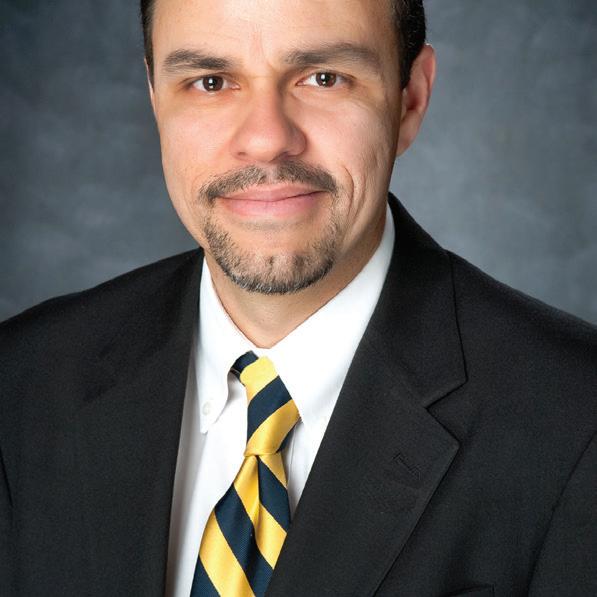
learning models to ensure students are applying the knowledge and reinforcing concepts until mastery through individualized learning. Augmented reality (AR) and virtual reality (VR) will help bolster these online learning experiences and improve the overall effectiveness of virtual classroom simulations.
Online degree program availability will need to expand and develop emerging technologies in real time to address labor market demands. Students and employers will expect to have access to the latest equipment and techniques to prepare for the rapidly advancing world of production of goods and services.
Learning Analytics: Data will continue to drive learning outcomes, and distance learning provides the ideal platform from which to monitor student engagement, progression, completion and effectiveness. Dashboards and apps will keep students, faculty and institutions connected more than ever.
Mobility: According to Wiley, 74% of all online students want their online classes to be accessible on their phones or mobile devices. The surveyed students cited access to check their grades, review assignments and submit to discussion boards easily as primary online classroom functions they want to access from their phones.
Flexibility: While TCC Connect counts monthly starts of programs and flexible terms as some of their distance learning innovations, online students want what they want when they want it. On demand distance learning options with self-paced curriculum the learners can control will become an industry expectation from students.
Distance learning done right is now an expectation that all learning institutions, colleges, universities, employers and trainers must be ready to meet. Online learning is no longer a possibility for students and employees. It is a probability.
Thankfully, virtual pioneers like Morales and the team at TCC Connect have already created a powerful blueprint from which to draw inspiration and innovation in achieving high quality teaching and effective learning.

Training and awareness remain the top deterrents to cyber crimes. by tom delamater

Over a span of just two weeks in early 2024, people in the United States and around the world experienced a stark reminder of just how little control any of us really has in our digitally dependent world.
Sandwiched between brief disruptions to AT&T’s wireless data network and LinkedIn’s online services, Meta—the parent company of Facebook, Instagram, Facebook Messenger and Threads—experienced a worldwide shutdown of its services for more than an hour.
At first, frustrated users were in a panic, worried they’d been hacked and shut out of their accounts. It wasn’t until they tried to access their other social media accounts that the picture became clearer: All of Meta’s platforms had been disrupted just days after the company announced it had patched a critical vulnerability that might have left Facebook accounts exposed to hackers.
Meta assured its users that the brief global outage was due to a “technical issue.” Eventually, service was restored, just as it was by AT&T and LinkedIn, and life went back to normal— or so it seemed.
Exactly what is normal, anyway? Beyond that, how badly are our digital systems and networks at risk of being compromised, both from a corporate and individual standpoint?
“We only have to ask what it is we need every day,” says Jessie Bolton, founder of Bolt Resources, a cybersecurity staffing and consulting firm in Dallas. “It’s our systems, of course; our Wi-Fi,











our internet, our networks, our point-of-sale systems, our utilities, our water systems and so on. That’s where the threats lie, and that’s where the bad actors want to attack us.”
By “bad actors,” Bolton includes foreign entities like China, Russia and the hackers that are given free reign by those governments to disrupt systems and networks around the world. But she also warns of cyber criminals closer to home.
“It’s right here in our backyard, as well as overseas,” she warns. “It’s hacker gangs and ransom gangs. It’s the good guys against the bad guys, and to counter them, we need to think like they do.”
The key to that, says Greg Harris, is knowing what they want.
Harris is chair of the Information Technology department at Tarrant County College’s Northwest Campus in Fort Worth. He says most hackers, particularly in the U.S., are motivated by money.
“Usually, it’s nothing personal. They’re grabbing data in order to sell it,” he says. “In some cases, they may get into your system and move information out of your network, and in other cases, they’ll encrypt the data within your system and hold it for ransom. Either way, it’s money they’re after.”
The largest ransomware attack against a critical infrastructure system in U.S. history was the Colonial Pipeline hack in 2021, which resulted in some of the pipeline’s digital systems being shut down for several days. Considered a national security threat, the crippling attack on one of the country’s major oil delivery systems affected airline and other operations along the East Coast and resulted in President Joe Biden declaring a state of emergency.

















“It’s the good guys against the bad guys, and to counter them, we need to think like they do.”
— Jessie Bolton FOUNDER, BOLT RESOURCES
Pipeline officials eventually paid the hackers $4.4 million in Bitcoin—a monetary system preferred by sophisticated hackers— to obtain the encryption key that allowed the company to regain control of its systems. (To the hackers’ dismay, the U.S. Department of Justice was able to trace the Bitcoin online and recover $2.6 million of the company’s money.)
One result of such attacks, Harris says, is that cybersecurity is a constantly evolving field.
“Every time an attacker does something, we develop a defensive mechanism,” he says. “Sometimes that can be frustrating and discouraging, but at the same time, it’s kind of exciting from a cybersecurity standpoint because you know you’re going to have the opportunity throughout your career to learn and grow and help protect people and their data.”
If phishing emails are so common and have been around for years, why are people still fooled by them?
“Hackers count on the fact that people are busy and will open emails and click on links without thinking,” Harris says. “That’s how they get into your network, and they’ll leverage that to move around and take control of what they can.”
Julio Casablanca is a senior security advisor with World Wide Technology, a St. Louis, Missouri-based technology services provider with an office in Plano. He says people are naive when it comes to cybersecurity threats.
“For one thing, as professionals they’re trained to be polite and trusting,” he says. “Sometimes they don’t question things and are too trusting, and it sets them up for scams.”
“In some cases, they may get into your system and move information out of your network, and in other cases, they’ll encrypt the data within your system and hold it for ransom. Either way, it’s money they’re after.”
— Greg Harris CHAIR, INFORMATION TECHNOLOGY DEPARTMENT
TARRANT COUNTY COLLEGE
If hackers are capable of doing so much damage, how are they able to access major systems in the first place? And what can be done to prevent it?
“The threats are constantly evolving, but the oldest ones are still the biggest ones,” says Harris. “The number-one way that hackers breach corporate networks is still through phishing emails, and it’s been that way for years.”
Phishing emails are fraudulent messages that appear to be from a credible or even trusted source, but are actually intended to infiltrate communication networks, steal money or valuable information or install malware. They may request personal or confidential information or include a hyperlink that, when followed, compromises the user’s computer and the network to which it is connected, making them vulnerable to cyberattacks.
According to the Cybersecurity and Infrastructure Security Agency, a component of the U.S. Department of Homeland Security, 90% of all successful cyberattacks start with a phishing email.
“It can seem real, like it’s from someone a person knows or has heard of, and that’s all it takes,” Bolton says. “Just one click can let hackers penetrate a system and take it down.”
Another common way hackers break into networks is by exposing or resetting passwords, a process that is easier than most people realize. That may be why “123456” is still among the most commonly used passwords, and why many people use the same password for multiple platforms and accounts, leaving them wide open to attacks from cyber criminals.
“Good cyber hygiene means doing things like locking your computer when you’re away from your desk, or creating passwords that don’t use common words or phrases that are easy to guess,” says Tripp Moultrie, a cybersecurity instructor at TCC’s Northwest Campus. “It also means common-sense things like not writing your password on a piece of paper and slipping it under your computer keyboard.”
According to Harris, such practices illustrate why it’s important for companies to develop a security culture and train employees to be aware of the threats posed by cyber criminals.
“The number-one thing a company can do to mitigate cyber threats is provide education and training for employees,” he says. “When your users are educated, they become part of the solution, because they’re the ones who are going to be targeted.

If you invest in employee training and awareness, you’re going to reduce your vulnerabilities dramatically.”
With threats increasing and the risk of network vulnerabilities at an all-time high, what can companies do to protect themselves?
“You can either have an internal team, which can be expensive, or you can turn to managed service and security solution providers,” Bolton says. “The problem is, we’re seeing a decline in the field, with a lot of cybersecurity jobs going unfilled and many professionals with four or five years of experience thinking of leaving the industry because they’re burned out.”
Statistics bear that out, with an estimated 750,000 unfilled cybersecurity positions in the United States and more than three million worldwide.
That being the case, there should be a lot of opportunities for new professionals who want to enter the field.
“If you have no prior experience, I firmly believe community college is the best way to go,” Casablanca says. “Everybody is following the Homeland Security curriculum, from two-year schools to four-year colleges and universities. So why pay top dollar without knowing whether this field is truly what you want to do? Tarrant County College and other two-year schools can give you the exact same training as four-year schools at a much lower cost.”
Another option is to obtain professional certifications, many of which can also be completed at a community college.
“Certifications are one of the best ways for people to strengthen
their credentials, especially if they’re already in the field,” Moultrie says. “Certifications differ in that they’re focused on specific technical skills, as opposed to degrees, which are broader and more general in nature.”
According to Harris, newcomers to IT and cybersecurity should, if necessary, be ready and willing to take the first job that comes their way.
“The possibility of leaving an educational setting and immediately landing a position in cybersecurity is not particularly strong,” he says. “You may work at a help desk. You may work in user support. You may work with cabling and infrastructure. It may not be cybersecurity, but it’s cybersecurity-adjacent and definitely IT-related.”
For current professionals in the field, he says it’s important to continue their professional development.
“In addition to continuing education and classroom opportunities, there are other great avenues available,” he says, including many in-person and remote opportunities with TCC.
Bolton adds another piece of advice for the would-be cybersecurity professional looking to break into the industry.
“The number-one thing I emphasize, next to cloud computing and security controls, are soft skills,” she says. “Do they understand problem solving and critical thinking? Are they able to articulate, communicate and interview well? Do they know what they want to do? Are they focused on developing a professional LinkedIn profile and getting involved in professional organizations that will help them network and meet people in the industry? Those skills are important for anyone entering the workforce.”

Tracing the history of tech in the workplace shows us how to capitalize on AI. by tyler hicks

there was a near-universal signal that it was time to settle down and face forward.
Someone, likely a teacher or colleague, would turn off the light and click a button. A square of light would fall on the wall ahead, and within that square, everything from presentations to negotiations could take place.
The overhead projector has, for the most part, gone the way of the mimeograph. It can still be found in some rural classrooms across the country, but as a business presentation tool, this once-ubiquitous technology has been eclipsed by smart boards, virtual reality and a litany of other tools. In fact, as you read this right now, some enterprising engineer is likely writing the code that will lead to the next great presentation tool.
Such is the way of technology: A new device is ushered into existence by some of the greatest minds of that particular generation, and it’s only a matter of time before the new invention is either improved upon or rendered obsolete. If anything, the overhead projector had a much longer shelf life than most innovations. Its earliest incarnations date back to the 19th century, and from the 1950s through the ’80s, it enjoyed a largely unopposed run as a tool of choice for businesses, schools and universities of various sizes. No tech can outrun the march of progress, though, which begs an important question:
How can business leaders keep up with the speed of innovation?
In the age of artificial intelligence (AI), this question is particularly salient. To be sure, retail and entertainment companies have already been using AI for years to recommend products, assess their customers’
satisfaction and enhance customer service.
But just as the smart board made the overhead projector look like a brontosaurus, generative AI tools like ChatGPT have made even the most complex algorithm look like yesterday’s news. This presents some unique challenges.
According to S&P Global’s most recent Global Trends in AI report, more than half of AI decision-makers in top companies are struggling to afford the latest AI tools. Higher education leaders are also struggling to adapt to this technology.
“With ChatGPT, it’s TBD,” says Bill Dillon, a marketing professor and dean of the SMU Cox School of Business. “Clearly students are accessing it, but we’re still determining how we implement it in a way where it’s a learning experience and not a retrieval process.”
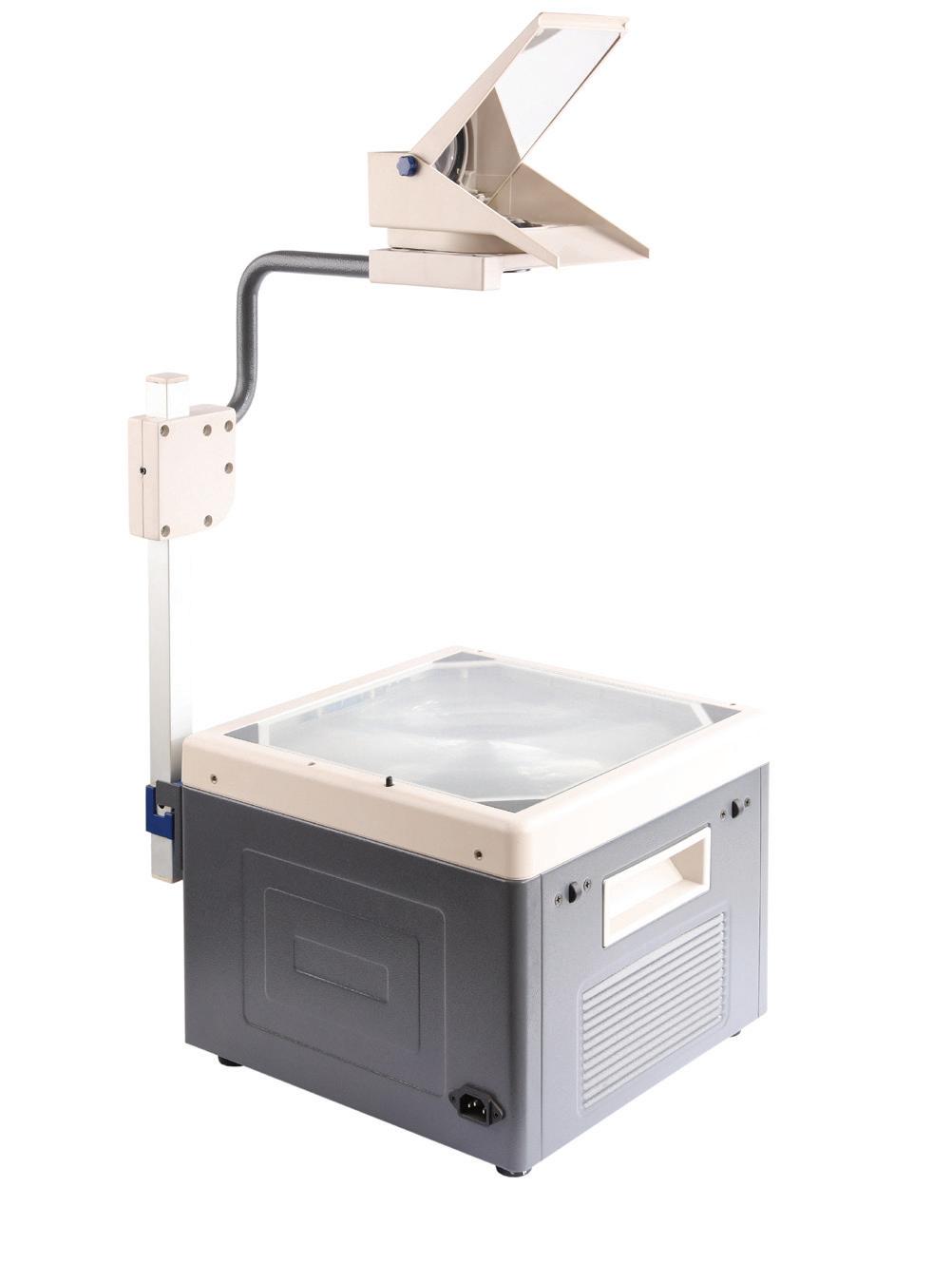

“Right now,” Dillon tells The Lens, “it’s the wild, wild west.”
Bryan Alexander, a senior scholar at Georgetown University and a futurist (which means his job is quite literally to predict and plan for the future) has a specific roadmap in mind for any business or higher education institution striving to adapt AI. Yet first, he says, it’s important to contextualize this new development in the long arc of tech in the workplace.
It always seems like technology is moving at breakneck speed, but it’s possible to catch up.
“To be a good futurist,” he says, “you have to look to the past.”
THE 1980s: AN ERA OF RAD UPHEAVAL
When the new device came along, many people were skeptical. It went against everything they believed they knew, and just as bad, it felt cold and impersonal.
I’m talking, of course, about the typewriter.
Shortly after Remington began manufacturing typewriters, the machine found its perfect home in offices around the world.

In the 1990s, the prevalence of email exiled the classic paper memo to the recycling bin of history.
“You can learn a lot from the typewriter,” Agustin Chevez, an architect and workplace design researcher, told the Harvard Business Review in 2020. “That’s what brought more women into the white-collar workforce, which was a big social change in the fabric of society.”
But while the proliferation of the typewriter was a momentous occasion for businesses and their employees, the launch of the personal computer in the 1980s was an even bigger deal.
The earliest computers weighed 30 tons and were mostly used by research labs, aircraft companies and the federal government. If you were lucky, you could rent one—for $15,000 per month. At that time, employees of a General Electric office in Brazil would wait in line for hours to use their office’s sole computer. Eventually these devices became small enough—and affordable enough—to give to individual employees. Some of those employees told HBR they felt like they “made it” when they received their computer.
“My first personal computer was a Compaq, in 1984,” recalled Andrew Shooks, a shipping industry employee in Texas in the 1980s. “It was a pretty big deal, and there was a lot of murmuring and muttering in the corporate office about somebody having a computer. And that was really just part of that whole shift to where there was information and knowledge outside of the corporate office.”
Naturally, the tech had its fair share of critics and skeptics.
In a 1985 article in The New York Times, tech columnist Erik
Sandberg-Diment described the laptop computer as a “fad” whose 15 minutes of fame would soon be up. This prediction rivals that of Ken Olsen, founder of Digital Equipment Corporation, who once said, “There is no reason anyone would want a computer in their home.”
Since pretty much everyone wanted a computer in their home and their office, the 1980s will be forever marked as a bellwether for the tech advancements to come.
In the 1990s, the prevalence of email exiled the classic paper memo to the recycling bin of history. For the first time, people could communicate electronically from across continents (or cubicles). And while most tech historians cite January 1, 1983, as the “birthday” of the Internet, that particular tech would have to wait nearly a decade for its catalyzing event.
In 1992, students and researchers at the University of Illinois created something called Mosaic. This new tool, which would later become Netscape, allowed its users to browse (or “surf”) the world wide web for words and pictures. Indeed, ’92 was the year the floodgates opened.
Companies of all kinds created their own websites, and online entrepreneurs began selling their products to people all over the world. Later that decade, after the invention of Yahoo! (originally called “Jerry and David’s Guide to the World Wide Web”) and the

“Universities and colleges can't fall behind on this.”




first viral video (a 3D animation of a dancing baby, of course), the duo of Reed Hastings and Marc Randolph would create a video distribution service called Netflix.
Like Bill Gates before him, Hastings would forever change the daily habits of people around the world. In the process, he became a perfect example of capitalizing on tech trends. More specifically, after years of competition, Netflix usurped Blockbuster in the video distribution business and forced the video rental giant to limp off to its dying place.
But the Netflix brass weren’t satisfied.
“Companies rarely die from moving too fast, and they frequently die from moving too slowly,” Hastings once said. At the time, he was announcing an intercompany split: The Netflix DVDby-mail service was being spun off and renamed Qwikster, and from that point forward, the Netflix brand would only offer streaming entertainment.
It’s important to point out that what looked like Hastings’
big bet was actually the culmination of years of methodical planning and gradual expansion, most notably by partnering with companies like Microsoft to build a streaming video app. The company continuously tested the waters of the streaming business, ultimately building a far-reaching infrastructure that, in effect, made them a pioneer of a new kind of entertainment.
Around the same time Hastings was making these moves, companies like Amazon, Google and IBM were changing the way both businesses and universities stored their data. Their work may sound less exciting than Netflix, but it has been just as revolutionary.
In 2006, Amazon launched Amazon Web Services: a cloud computing company that, over the next 15 years, grew to include database management services as well as data analytics, application services, machine learning and much, much more.





























It seems innovation happens in bunches; that same year, Google launched Google Docs services (and Netflix launched its streaming service).
Shortly afterwards, companies began asking questions that, to this day, befuddle many users. Questions like, “what exactly is the cloud?” And, “tell me again: how does it work?”
These questions necessitated the invention of the private cloud, with companies like IBM and Microsoft once again leading the way. Notably, in 2011, Apple launched the iCloud, which is now practically synonymous with the very idea of cloud storage. Security questions persisted, and by 2014, cloud security was a full-fledged industry offered by companies around the globe. The COVID-19 pandemic made these even more valuable, as people left their offices for their homes and many companies adapted remote or hybrid arrangements. Further, had it not been for each successive innovation outlined in this story, remote work—or

business as we know it today—simply wouldn’t be possible. But this doesn’t mean we’re at the finish line.
Virtual reality and AI have changed the game once again, giving companies more tools to meet their goals while simultaneously creating new challenges for both the people at the controls and consumers around the globe.
“Speculation varies wildly because AI appears complex and opaque, and it is no wonder that the general view about AI has turned cautious—and even negative,” researcher and author Kai-Fu Lee wrote in TIME magazine. “To be sure, aspects of AI development deserve our scrutiny and caution, but it is important to balance these concerns with exposure to the full picture of this crucially important technology’s potential. AI, like most technologies, is inherently neither good nor evil. And I believe


that, like most technologies, AI will eventually produce more positive than negative impacts in our society.”
Still, Lee’s views of AI aren’t entirely sunny. He believes this technology will “displace” many manufacturing jobs and even many “white collar” jobs, beginning with entry-level positions. Professions from assistants to accountants are at risk, and Lee says this upheaval necessitates major changes in how students are educated and employees are trained.
That’s where Alexander has some thoughts.
In an interview with The Lens, the futurist outlined three “musts” for both businesses and universities prepping for an AI-centric future.
First, companies and higher education institutions must treat AI as a strategic issue.
“Universities and colleges can’t fall behind on this,” he says. “There are a lot of vendors in this space aggressively building these skills, and this is the time to negotiate with them. The same is true for the vendors, who have an opportunity to mark their territory.”
Alexander’s second tip is that businesses and universities need to bolster their knowledge about what AI is, what it isn’t and
what it means for their organization and their stakeholders. This means educating your board and training your people on precisely what it means for their position, and most importantly, how to use it.
And lastly, both parties need to realize that AI won’t just displace jobs; it will create them, too. Positions like “AI Manager” and “AI Editor” or “Leader of AI Operations” will pop up at every major company; many have already have implemented similar roles. And while Alexander fully acknowledges that very few businesses and universities will have the resources or capabilities to go “all in” on AI, gradual investment and knowledge-building will help these organizations position themselves for long-term success.
Just as Hastings incrementally made his mark on the streaming world, and just as companies over the last 50 years have stood on each other’s shoulders time and again, anyone seeking to innovate with AI doesn’t need to take one big leap: Gradual steps will also get you where you want to go.
“The key thing,” Alexander says, “is that you start making your moves today. The time for building the future is right now.”
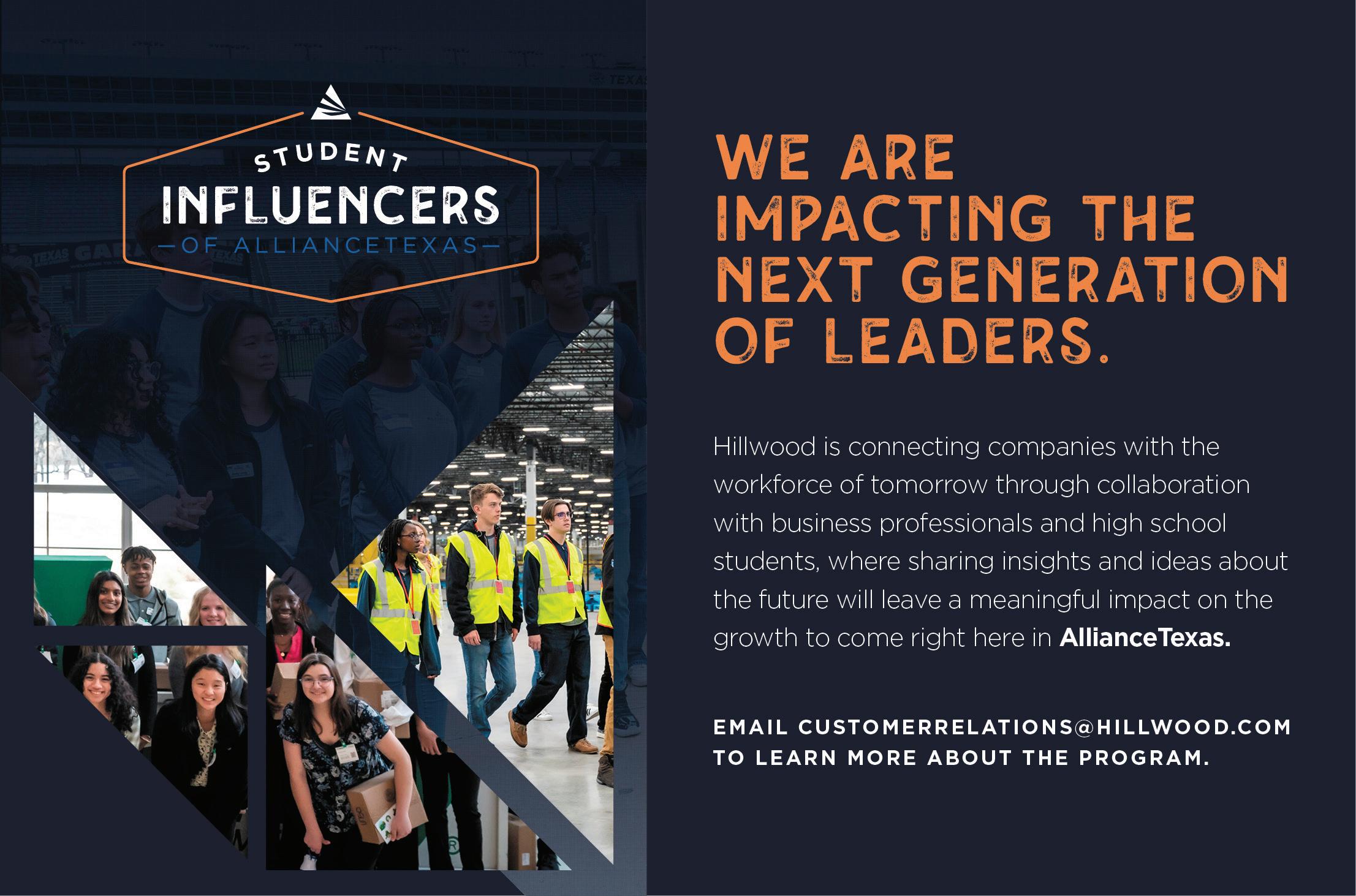

Michael Wilson always liked solving problems. The Long Beach, California, native naturally gravitated toward the issues others had a hard time figuring, and he would later parlay that skillset into launching his own endeavors.
Since relocating to the Metroplex, Wilson started Processology, a hybrid consultant company that not only advises but actively implements and optimizes operations for organizations looking to streamline and scale. Wilson sat down with The Lens to discuss his move to Texas, the entrepreneurial spirit that is alive and growing in the region, and how Processology helps businesses stay on the cutting edge of technology.
How did you get your start as an entrepreneur?
I come from a family of entrepreneurs. My father’s an entrepreneur, both uncles are entrepreneurs. I started helping my family with their business around the age of 7. Then I ended up starting my own company right around 2021. And that was fun. Business has always been something that has intrigued me, and going that route made me realize that I naturally gravitate to business. Since then, I’ve started seven businesses, and Processology is my most recent endeavor.
What made you start Processology, and what precisely does Processology do?
It started by just seeing the challenges that I had in business and that people around me had in business. I was naturally being pulled into this consulting role, and I was pretty good at it. I was also pretty good at problem solving. I saw that there was an opportunity and a need for consulting and problem solving in operations, and specifically digital operations. Because we live in such a technology-driven world, everything is going into the cloud. And now, obviously, we’re seeing things like AI and all that. I saw that things are just moving so fast, and if you are not up on the new technologies and the new softwares, you could be left behind. It’s like riding a bike and your competition is in a sports car.
How did you make Processology a sports car?
Not everyone is a tech person. Also, not every business knows how to implement a plan, or even how a plan can be positioned to work for their business. I ended up getting into processes specifically: how do we optimize processes; how do we improve processes? And I realize that a lot of people were doing things without knowing if they would work. I see this everywhere—across nonprofit, across education, across corporate—and especially if you’re starting a business.
“One of the unique things about Processology is that we’re a hybrid consultancy, meaning we help you figure out your processes, the design, the assessment, but then we also do all the implementation for our clients and all the enablement and training.”

Before you even start with a new client, are they coming to you asking about technical advances? Do they expect you to be on top of all technologies in terms of AI and other sorts of generative or computer-assisted learning?
One of the unique things about Processology is that we’re a hybrid consultancy, meaning we help you figure out your processes, the design, the assessment, but then we also do all the implementation for our clients and all the enablement and training.
Because there is so much variety and there are so many differences in the various sectors of an economy, how can the process of solving the problems of one industry be applied to the problems of another?
I’ll give an example: I talked to a client the other day that’s an electrical company, and they’re doing things the way most electrical companies do things in terms of how they reach out to their clients and how they service their clients. So typically, somebody sends in a form, and the company will follow up with emails to set up an in-home appointment. They were seeing a decline in customers and wanted to know why. Everybody wants to move the bottom line. And so the conversation was around: are you operating in a way that connects with your customer
today? People already feel busy; they already feel overwhelmed. They already don’t trust salespeople right from the start. So how do we remove as much friction from the customer experience as possible? So we talked about what it would look like if we were going to do digital inspections to give quotes instead of going to someone’s home. They can do it by using something they use every day, like Zoom. The business and their potential client are already using these tools. They’re already comfortable with these tools, and guess what? The potential client doesn’t have to wait on someone to come to their home. The assessment can be done now in 10 minutes, which is more convenient for the homeowner. Streamlining processes and making them more contemporary is a large part of what we do.
Why did you decide to relocate to Texas?
Obviously, Texas is as business friendly of a state as you can get, especially within our community in the Metroplex. And I think you’re seeing that because we’re growing really, really fast. So I think there’s a lot of opportunity here, and I think there’s a lot of talent here. And I think for companies that are looking to grow and scale, this is where you want to be. You want to be where the talent is.


Tarrant Small Business Development Center (SBDC) provides management and technical assistance to local small businesses and aspiring entrepreneurs throughout Tarrant County The consulting services provided are at no cost and training services are at a nominal fee
Business consulting services are customized, one on one face-to-face or virtual at no cost Consulting services provided are business plan development, capital acquisition, marketing, regulatory compliance and more. The Tarrant SBDC provides services to a diverse population, including special emphasis groups; women, minorities and veterans who are seeking to start or grow their business.

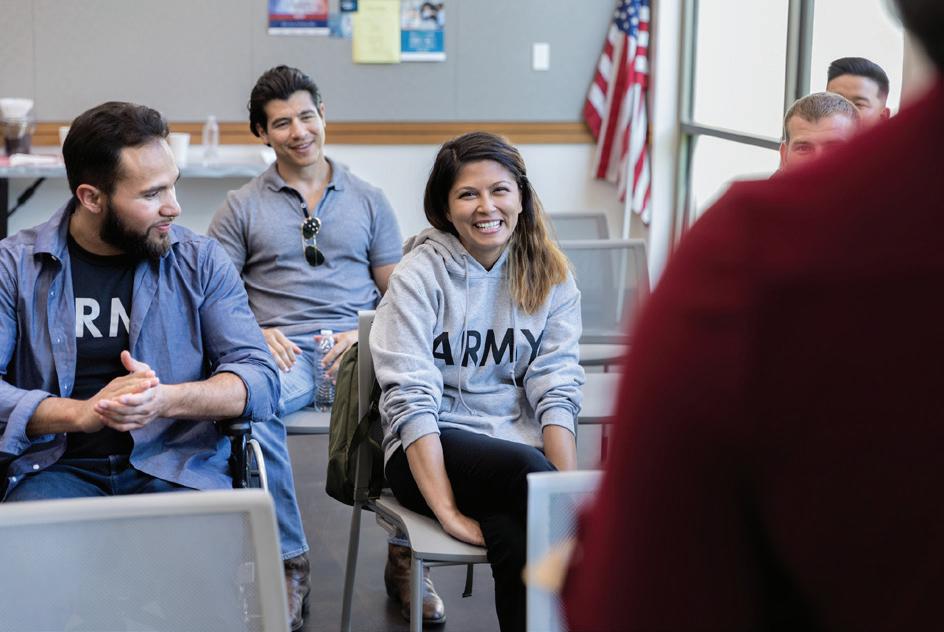
The Tarrant SBDC is hosted by Tarrant County College and is one of twelve field centers of the North Texas SBDC Network Funded in part through a cooperative agreement with the U S Small Business Administration (SBA) SBA’s funding is not an endorsement of any products, opinions or services.

Accounting & Bookkeeping
Business Planning
Cash Flow Models
COVID-19 Support
Disaster Services
Financial Planning
Government Contracting
Legal Structures
Licensing & Permits
Market Research
Startup Cost
Target Marketing
Special arrangements for the disabled will be made when requested in advance Advising services are offered by the Tarrant Small Business Development center without regard to race, color, age, national origin, religion, sex or disability. Special provisions will be made for limited-English speaking individuals.
For accommodations, please contact the Tarrant SBDC at 817-515-2600
www tarrantsbdc org


Fort Worth venture capitalist Marcos Rodriguez finds success in tech with Virtual Person. by ian fitzpatrick, esq
Those closest to Marcos Rodriguez would describe him as dynamic and down to earth. A serial entrepreneur and venture capitalist born in Cuba, who came to America at age 6 and who has spent much of his personal and professional life in Fort Worth, Rodriguez has seen much from his vantage point in business and in life.
“I love technology,” Rodriguez says. “I love entrepreneurship and I love business.” These three “loves” were nurtured by his father, who was an early owner of Spanish-language radio stations in North Texas and allowed Marcos to learn a lot about the media business at an early age. Rodriguez’s keen interest in technology and entrepreneurship led to his latest play—this time in artificial intelligence (AI)—with a start-up named Virtual Person.
Rodriguez is focused on human interaction, and he believes that much of the automated selling, email and social media campaigns used by businesses today have been created with the objective of avoiding people.
“We don’t want to talk to anybody,” laments Rodriguez. “We can’t afford to really meet with anybody. We need to come back to basics.” This is where Virtual Person comes into focus. Utilizing Chat GPT-4, Rodriguez and the engineers at Virtual Person have created bots—so-called subject matter experts—that can think and speak conversationally like a real person instead of delivering information via a text-chat format.
Rodriguez says this takes a website to the next level, bridging the difference between being a brochure-type website and having a salesperson talk to you. “We like the idea of being
able to provide sales and marketing services to a website visitor where it runs 24 hours a day and is engaging,” Rodriguez says. “We can sell this, but the idea is to get into the AI space and just start, because a year from now, this thing could be so much bigger and so much more different than we can even see today.”
Just like the subject matter bots that animate Virtual Person, Rodriguez learned the importance of being his dad’s subject matter expert in things he did not necessarily like as his father sought to reinvent himself in the radio business upon leaving Fidel Castro’s Cuba in 1962. Going to work for his dad’s FM radio stations in North Texas—KESS and KLTY—out of high school, Rodriguez took on contract administration and engineering—two things his dad did not like.
“I had to figure out what all that meant, and I developed an appreciation for all things engineering, which eventually became all things technical, which became computer and internet topics,” Rodriguez recounts, saying that his dad concentrated on connecting with people and left the technology to his son. “The fact that he could speak Spanish and understand the Spanish language, it positioned him well for Spanish media. He was able to tap that opportunity, speak to that community and become a bridge to the rest of Dallas/Fort Worth who didn’t get it and didn’t understand.”
Rodriguez says there’s a surprising amount of difference between Fort Worth and Dallas. “Fort Worth and Dallas have vastly different brands and reputations, and I think it plays out a lot in attracting talent, for one,” Rodriguez says. “The opportunity
“We like the idea of being able to provide sales and marketing services to a website visitor where it runs 24 hours a day and is engaging.”



Marcos Rodriguez AI ENTREPRENEUR
“If you stay in your garage too long and say, ‘I'm going to stay in this garage and keep raising money until we get to my vision,’ there's a possibility that you're going to miss a lot that the customers would have told you.”
for a Fort Worth entrepreneur is to figure out how to leverage that lower cost—and it is a dramatic difference. So, if you are a Fort Worth entrepreneur—a Tarrant County entrepreneur—you want to not only leverage but arbitrage that lower cost.”
The excitement of being an entrepreneur in a pro-business environment like Fort Worth attracted his dad to start anew in the 1960s, and the legacy continues to motivate Rodriguez today. “I’ve been here literally all my life, since I was 6 years old. After 50 years of doing business in the Metroplex, it still has not ceased to amaze me how encouraging it is for business and for new ideas,” he says.
One such new idea that captivated Rodriguez was blockchain—a technology used to verify transactions that allowed cryptocurrency to flourish until it was undone by fraudsters. In 2017, he made a foray into blockchain with a venture called Esela—named to honor his mom, Gisela, who was educated as a pharmacist in Cuba. “What fascinated me about some blockchain applications is the ability to have a shared ledger where we didn’t have to depend so much on trust,” Rodriguez says.
Since diving into blockchain, he has seen an expanding chasm vis-à-vis interpersonal trust, and believes the mistrust is going to get worse before it gets better. “We’re on this long-term trend toward being unable to trust people and unable to trust authentication, where we can’t trust documents, and it’s going to get worse.”
While the timing might not have been right for Rodriguez with blockchain, he says entrepreneurs ultimately succeed by
not quitting. “Keep pivoting as much as you have to, but don’t give up,” he says. “A lot of entrepreneurial success is timing and the regulatory environment for things. Those two phenomena are sometimes lost in the typical startup presentation, and a lot of times they’re lost in the entrepreneur’s thought process. We tend to love our ideas a lot. We kind of say, well, because I want to do it and it’s such a great idea, now must be the time.”
With so much sage business advice to help all sorts of businesses—including nonprofits—Rodriguez, through his namesake venture capital firm Rodriguez Capital—has learned a few things along the way that he consistently uses when executing his own business plans or advising entrepreneurs. He cautions that entrepreneurs should go sell to customers as soon as possible and build their businesses in the direction of those customers.
“If you stay in your garage too long and say, ‘I’m going to stay in this garage and keep raising money until we get to my vision,’ there’s a possibility that you’re going to miss a lot that the customers would have told you,” Rodriguez says. “You want to be able to build a business and not just exploit an idea or a vision.
As a venture capitalist, Rodriguez sees lots of visionary ideas but says that entrepreneurs need to be able to sell those ideas in the marketplace with products and services that customers want. “That is what entrepreneurship must be about,” remarks Rodriguez. “It’s not about having a big idea and a big vision and then building toward it; it’s about building a business.”


We have many ways to partner with your organization:
Volunteer Engagement
Employee Giving
Matching Gifts
Naming Opportunities
Philanthropic Investment
Sponsorships and so much more…

In a world where technology is rapidly advancing, the future of education is being reshaped by the power of artificial intelligence (AI). The ancient practice of learning, once exemplified by the inspiring relationship between Socrates and Plato, is now being reimagined with AI as a mentor, guiding young minds on a journey of discovery and growth. Socrates, the wise philosopher, engaged in thought-provoking dialogues with his students, most notably Plato, challenging them to question their assumptions and beliefs. Through these dialogues, preserved in Plato’s writings, one witnesses the transformative power of mentorship. Socrates’ guidance and questioning style, known as the Socratic method, fostered critical thinking and self-reflection in his students, enabling them to grow both intellectually and personally. The impact of this mentorship is evident in Plato’s own philosophical works, which have shaped Western thought for centuries.
Today, with the advent of AI technology, the potential for such transformative mentorship is within reach for students everywhere. AI can serve as a tireless, knowledgeable and engaging mentor, ready to inspire students to explore new ideas, ask probing questions and unlock their full potential. As AI continues to advance, the opportunities for personalized, Socraticstyle mentorship in education will only expand, empowering students to embark on their own intellectual journeys. This transformation is not merely a disruption, but rather a renaissance of education, opening up a world of possibilities for students of all ages to experience the lifechanging power of a mentor, just as Plato did with Socrates.
intricacies of rocket engines, guided by an AI tutor that adapts to their level of understanding. The AI mentor becomes a patient and knowledgeable teacher, answering questions, providing explanations and steering the student back on track when they veer too far off course.
In this brave new world of education, the role of educators will shift from being the primary source of knowledge to becoming facilitators of learning. Teachers will oversee the students’ progress, ensuring that they are engaged and on track with their individualized learning paths. They will create immersive learning environments that foster creativity, collaboration and critical thinking.
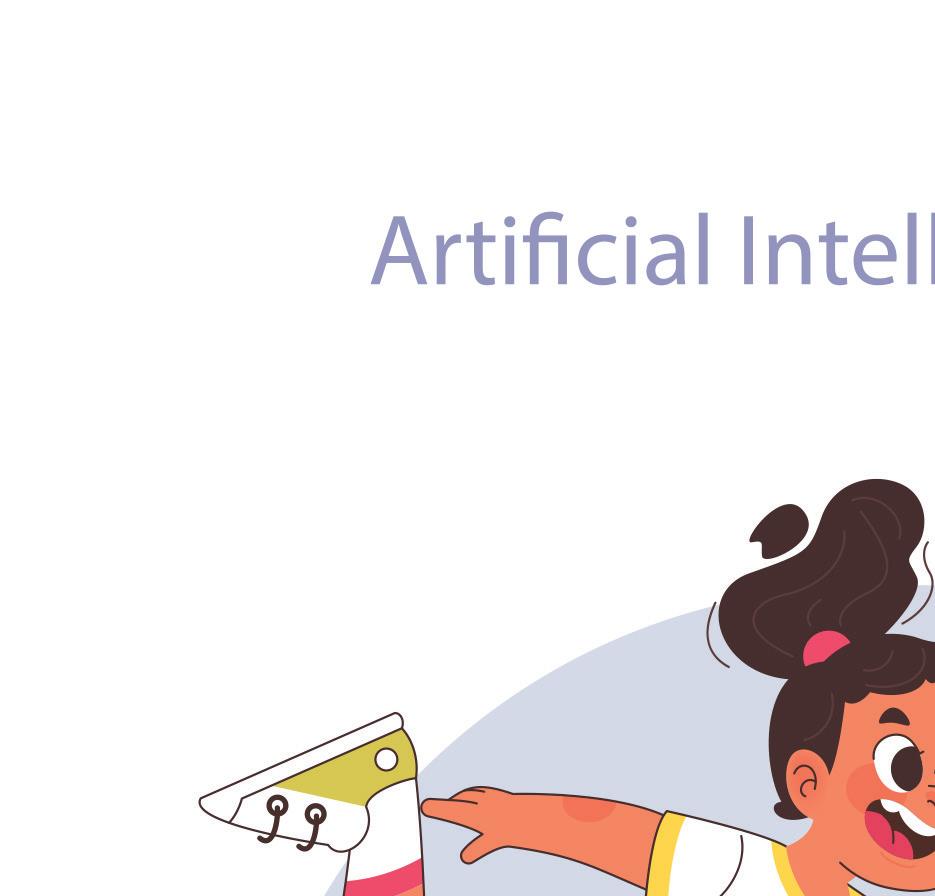
Picture a classroom where students are not confined to a rigid curriculum, but instead have the freedom to explore their passions and curiosities. A first-grader, fascinated by the wonders of space, can dive deep into the


The traditional classroom, with its rows of desks and chalkboards, will be replaced by dynamic learning spaces that cater to the diverse needs of students. Collaborative stations will allow students
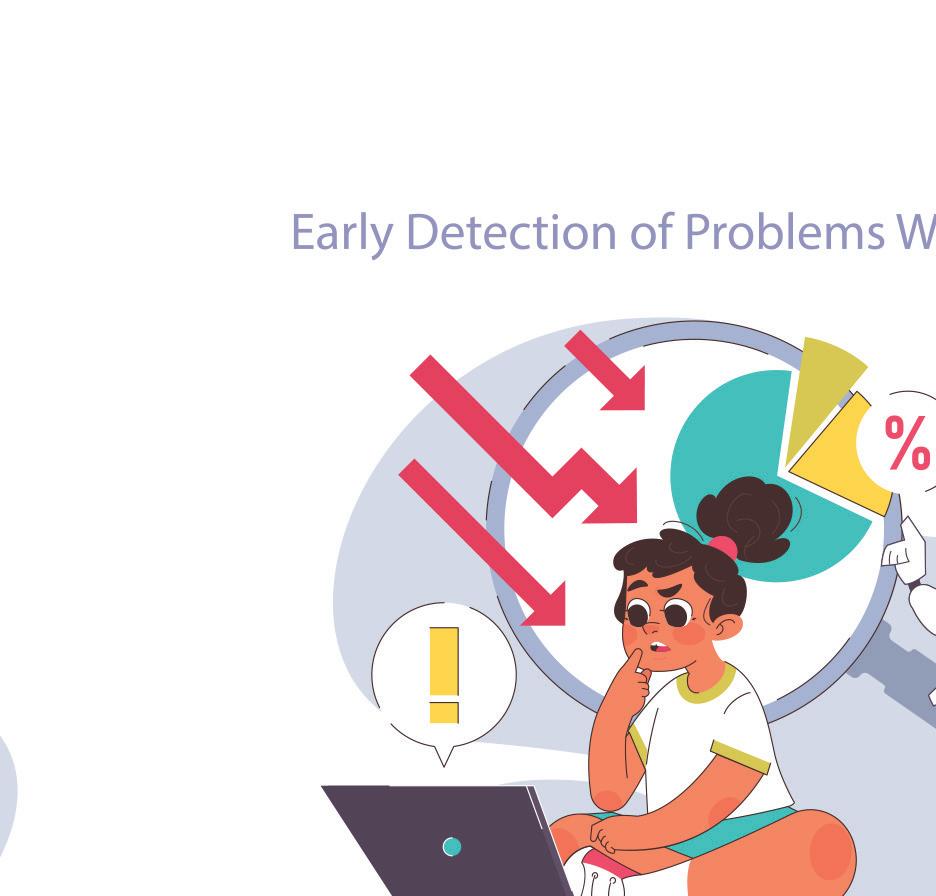
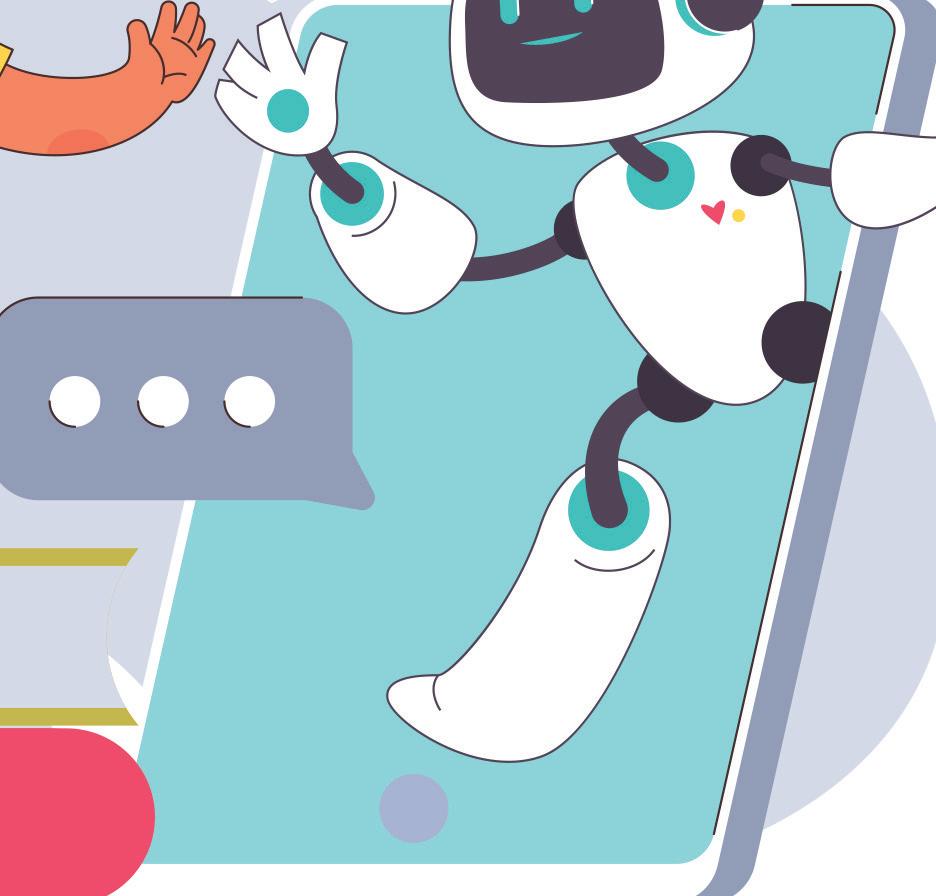

Students will be empowered to take control of their own learning, to explore their interests and develop skills that will serve them well in their future careers.


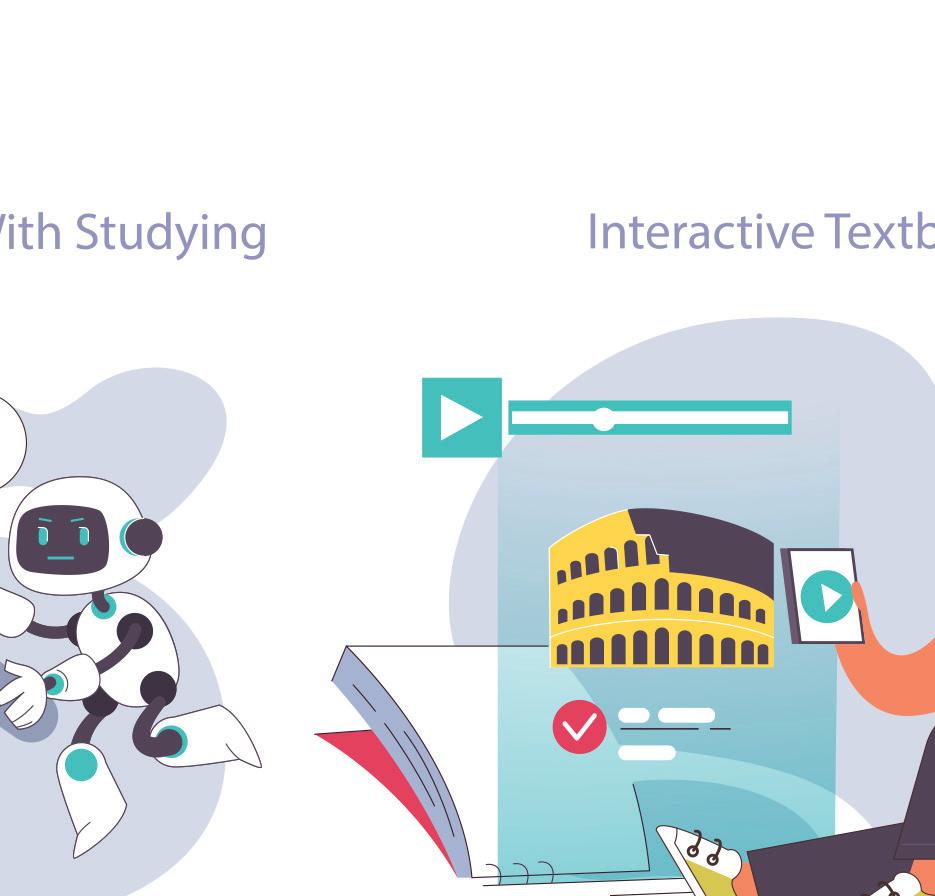
to work together on team projects, guided by AI-generated prompts that encourage problemsolving and innovation. Creation stations will provide hands-on opportunities for students to design and build, with AI assisting in the creation of blueprints and dimensions.
Electives will no longer be limited by the expertise of the teaching staff or the resources available at the school. Students will have access to the greatest minds in every field, thanks to the power of AI. Whether they want to learn about ancient history, coding or creative writing, they will have a virtual mentor ready to guide them through the intricacies of the subject matter.
The integration of AI in education will also break down barriers for students who may struggle with traditional learning methods. Speech-to-speech technology will allow students to communicate with their AI tutors without the need for advanced literacy skills. As they progress, the AI can even write out responses phonetically, helping students develop their reading and writing abilities at their own pace.
Video lessons will be transformed by the power of AI-generated prompts, allowing students to learn through immersive, interactive experiences. Students will be actively engaged in the learning process, asking questions and receiving immediate, customized feedback from their virtual mentors.
The transition to this new era of education will not be without its challenges. Teachers will need to be trained in the use of AI tools and will need to adapt to their new role as guides and facilitators. Parents and students will need to embrace a new way of thinking about education, one that prioritizes individualized learning and the pursuit of passion over standardized test scores.

However, the benefits of this AI-powered renaissance in education are immeasurable. Students will be empowered to take control of their own learning, to explore their interests and
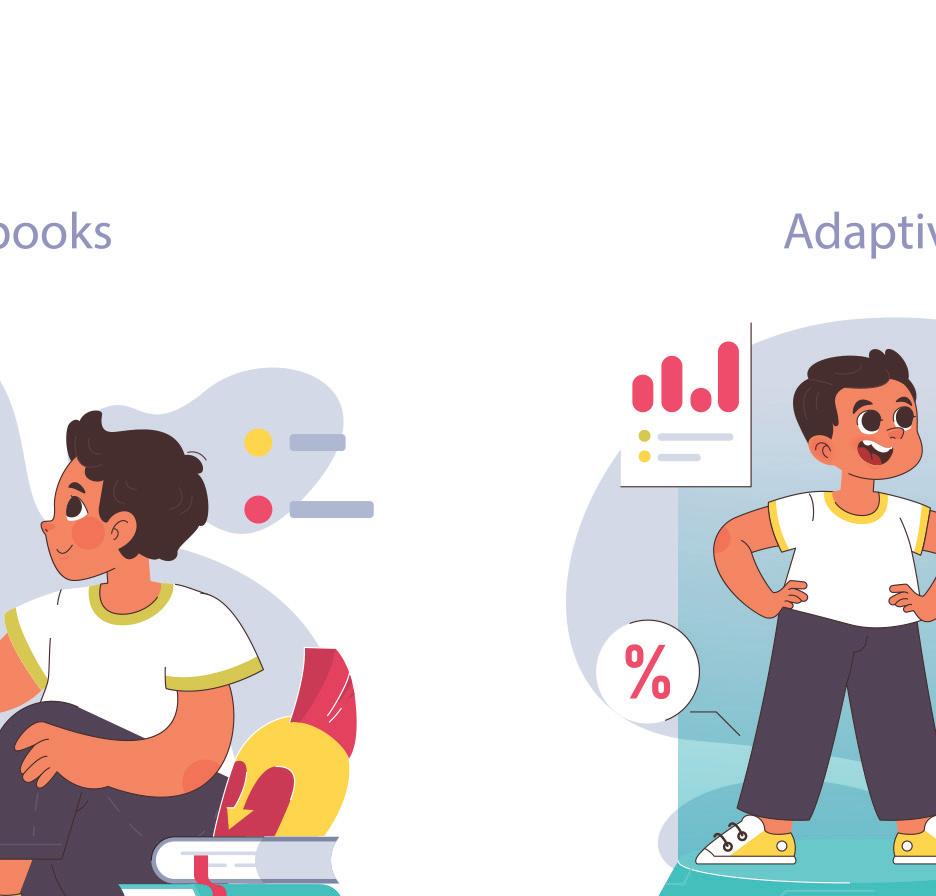
develop skills that will serve them well in their future careers. They will learn to think critically, to ask the right questions, and to seek out knowledge from a variety of sources.
Moreover, this transformation in education has the potential to narrow the achievement gap and provide equal opportunities for all students, regardless of their socioeconomic background. With access to the best teachers and resources at their fingertips, students from all walks of life will have the chance to excel and reach their full potential.
As we embark on this brave new world of education, it is important to remember that technology is not a replacement for human connection and interaction. Schools will still play a vital role in providing a physical space for students to come together, to socialize and to learn from one another. Teachers will still be essential in providing guidance, support and encouragement to their students.
The AI renaissance in education is not about replacing human teachers with machines, but rather about augmenting their abilities and empowering them to be better mentors and guides. It is about creating a world where every student has access to the best education possible, where learning is a joyful and lifelong pursuit.
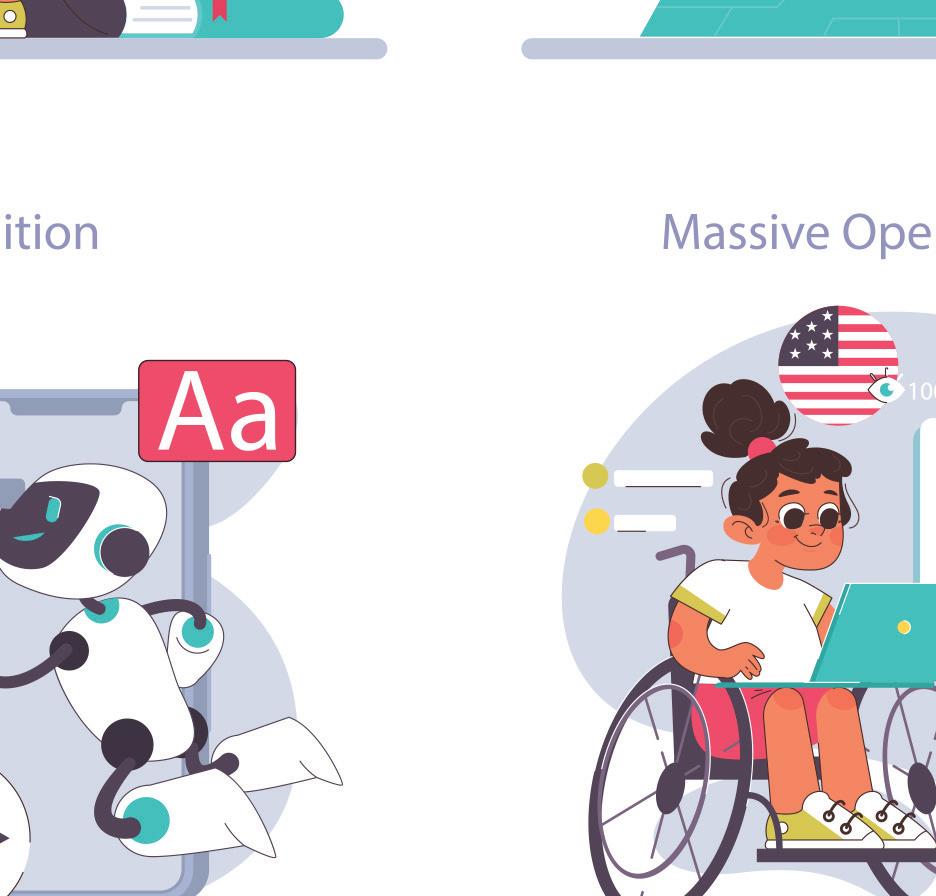
There will undoubtedly be challenges and growing pains. But on the other side of this transformation lies a full and vibrant life, one where every child has the opportunity to reach for the stars and achieve their dreams. It is a brave and beautiful world, and the future of education has never looked brighter.
Test your knowledge about the evolution of technology.
by jacquetta dantzlerWelcome to our tech-tastic quiz (sorry, I couldn’t resist). In this quiz, we journey through the fascinating evolution of technology! From the humble beginnings of the overhead projector (remember those from grade school?) to the mindbending advancements of artificial intelligence, we’ll explore the milestones that have shaped the way we live, work, and connect with the world around us.
Take this quiz to test your knowledge while simultaneously learning about the ingenuity that is changing the way we work and educate.
I am equally blown away by and excited about the innovation before us. So, grab your gadgets, and let’s dive into the evolution of technology.
1. What year did the first iPhone release, revolutionizing the smartphone industry?
a) 2005
b) 2007
c) 2010
d) 2012
2. Which of the following is NOT a common use of Artificial Intelligence (AI) in the workforce?
a) Automating repetitive tasks
b) Analyzing data for insights
c) Predicting future stock market trends
d) Creating emotional connections with customers
3. When did Virtual Reality (VR) technology become mainstream?
a) 2000
b) 2010
c) 2014
d) 2020
4. What are micro-credentials?
a) Small electronic devices
b) Credentials awarded for completing short, focused courses
c) Tiny robots used in medical procedures
d) Financial incentives for using online services
5. Which of the following is NOT a benefit of e-learning?
a) Flexibility in scheduling
b) Access to a wider range of courses
c) Limited interaction with instructors
d) Elimination of distance barriers
6. What are data farms?
a) Agricultural farms specialized in growing data
b) Large facilities housing computer servers for data storage and processing
c) Farms where data scientists conduct experiments
d) Farms where genetically modified data is produced
7. In what year did virtual meetings become widely adopted, especially due to the COVID-19 pandemic? (HINT)
a) 2010
b) 2015
c) 2020
d) 2022
8. Which Tarrant County city is known for its emerging technology startup ecosystem?
a) Arlington
b) Fort Worth
c) Southlake
d) Grapevine
9. How is AI being integrated into higher education?
a) By replacing human teachers entirely
b) By providing personalized learning experiences for students
c) By creating robots to attend classes on behalf of students
d) By banning the use of technology in classrooms
10. What impact does AI have on the workforce?
a) Eliminates the need for human workers
b) Creates new job opportunities
c) Increases job security for workers
d) Slows down technological advancements
11. Which of the following is a potential concern regarding AI in schools?
a) Enhancing personalized learning experiences
b) Providing equal access to educational resources
c) Bias in algorithms used for grading and assessment
d) Encouraging critical thinking skills
There is an iconic video of a young Bill Cowher, then head coach of the Pittsburgh Steelers, going ballistic over a blown call by the officials. His team was penalized for too many men on the field on a 1995 field goal attempt by the opposing Minnesota Vikings at the close of the first half.
At halftime, Cowher charged referee Gordon McCarter with a black-and-white photo of the formation in question, showing only 11 Steelers on the field, and angrily stuffed it into the official’s breast pocket.
Twenty years later, Cowher would have been attempting to shove a Microsoft tablet into McCarter’s pocket.
Cowher is no longer on a sideline. His bust is in the Pro Football Hall of Fame. And the NFL no longer relies on photographs as a coaching tool. NFL sidelines entered into the world of technology in 2014 with Microsoft tablets replacing those photos.
In-game photos had been around for decades. Team film crews shooting games would provide pre- and post-snap photos, taken about three to four seconds apart, showing the offensive formations and defensive alignments of the 22 players on the field. Those photos would then be transmitted down to a printer on the sideline. There, a coach would be able to retrieve and study the photos, show them to the players involved and then discuss what happened on any play and, more importantly, why.
Information is knowledge, and knowledge is power. Those photos imparted information to both sides of the ball: particularly the offense; specifically the quarterback. He triggers every play of every game.
“Quarterbacks have to make the most decisions of anyone on the field on any given play,” Dallas Cowboys coach Mike McCarthy told The Lens. “So it’s important that they review every single play.”
The pictures allowed any reason for failure to be addressed.
“The first picture is the anticipation,” McCarthy says. “The second is the confirmation.”
The process would take 6-7 minutes for the coach to get the photos to his players. In that time, another two or three plays might be run on the field. But when the tablets arrived in the NFL, the process sped up. Pictures could be transmitted electronically almost instantaneously, shaving minutes off the process. And the pictures could be transmitted to multiple tablets, an upgrade from a single sideline photo.
Which is why, after almost every series, you’ll see the quarterback come off the field and immediately reach for his tablet.
“When you make a play, you think that’s what you saw; you thought that’s what you saw,” Pro Bowl quarterback Dak Prescott of the Cowboys told The Lens. “Sometimes it works out that way and sometimes it doesn’t. You can visit with your coach, your play-caller and say, this is what we saw and this is how to execute it. It clears up any gray area and confusion between the play-caller and the guys executing the play.”
Sometimes the quarterback sees what he thought he saw. Other times, he doesn’t. Quarterbacks Tom Brady and Aaron Rodgers have been shown on NFL sidelines throwing tablets in frustration. Coach Bill Belichick also has tossed a tablet or two. There’s even a video of former NFL quarterback Johnny Manziel repeatedly head-butting his tablet.
Each team is allotted 32 tablets per game. There are tablets on the sideline (20) and upstairs in the coaching box (12). Each position coach has a customized tablet programmed for his visual needs.
“The tablets improve the lines of communication between those on the field and those off,” McCarthy says. “That’s a plus. The volume of the information and the efficiency of the information is enhanced.”
The tablets have also enhanced the play on the field, particularly at the quarterback position.
Tablets have “made me a better quarterback by 1,000 percent,” Prescott says. “If they turned them into live video, it would make me even better. But that’s a part of why they won’t. It’s because it’s another tool and resource for us (on offense) to have an advantage.”



Join host Jacquetta Dantzler of TCC Corporate Solutions and Economic Development, as she engages in insightful discussions with influential leaders, unveiling the secrets to navigating Tarrant County and North Texas’ dynamic business world. Tune in for an exclusive peek into strategic conversations that shape the landscape of the workforce, ensuring you stay ahead in the ever-evolving world of professional growth.
Listen to the podcast at corporate.tccd.edu/categories/podcast and check back regularly for new episodes!
Step into the future of workforce development with The Workforce Lens podcast. tccmeansbusiness.com






